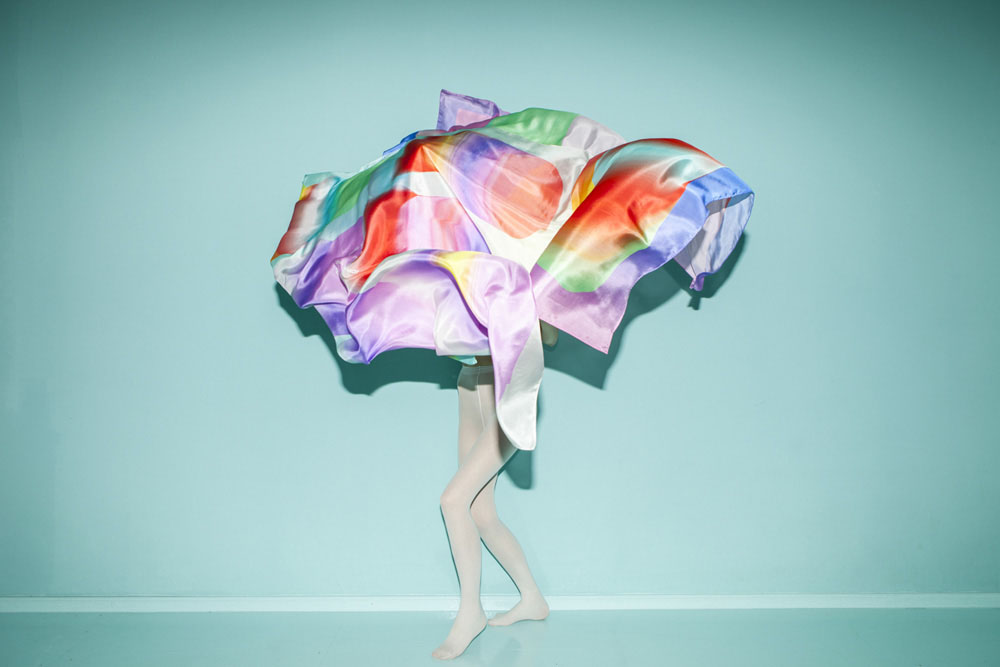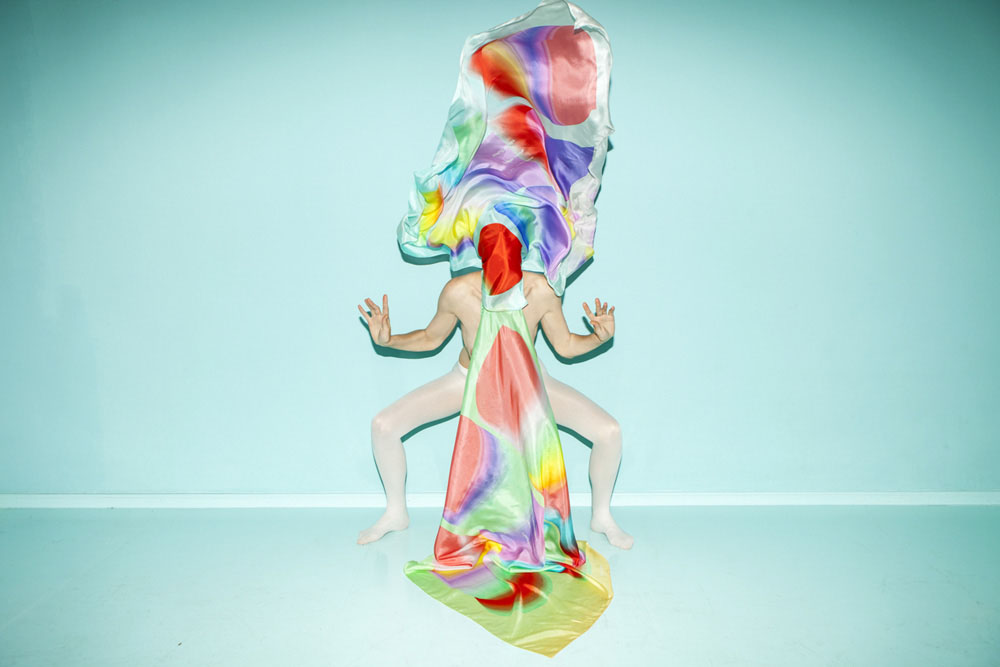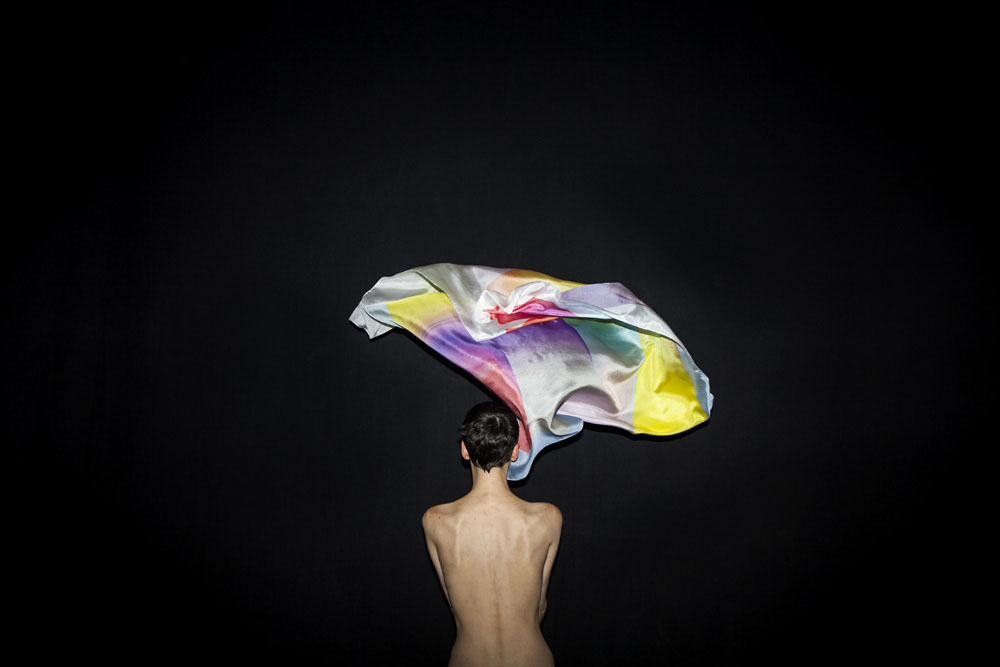----------
2025
My work as part of a group exhibition "Sex and Politics" at Bastille Design Centre in Paris (13.11.25-15.11.25).
"Sex and Politics" explores the intersections of sexuality, representation, and power in contemporary photography. The exhibition features artists whose work engages the body, desire, and the cultural ideologies that shape them. Text for the exhibition by Slavoj Zizek.
Among artists: Santiago Sierra, Antoine D'Agata, Roger Ballen, Mark Seliger, Boris Mikhailov, Lars Von Trier, Pussy Riot, Joel Peter Witkin and others.
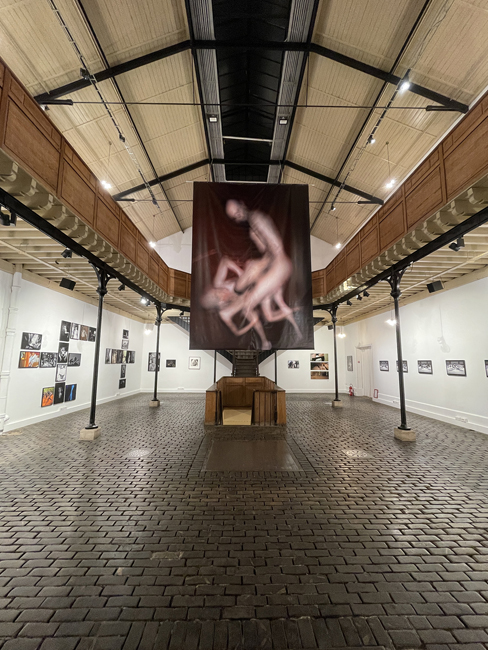
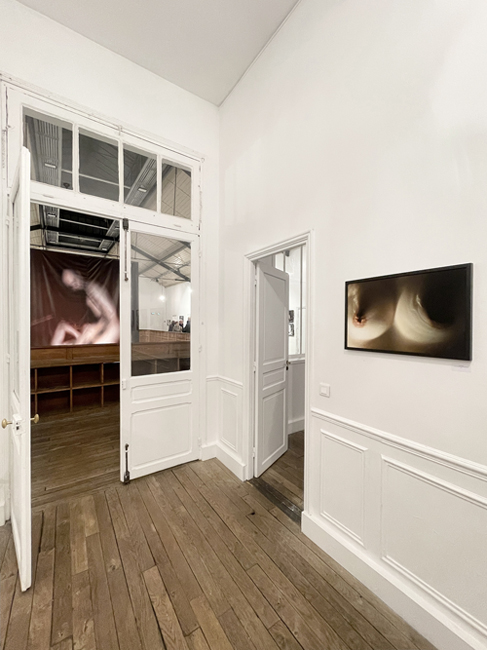
----------
2025
My work as part of an exhibition "Dear Eliza" at Pamenkalnis Gallery, Vilnius, Lithuania
https://pamenkalnio.lt/en/galerija/julija-goyd-ivona-tau-dear-eliza/
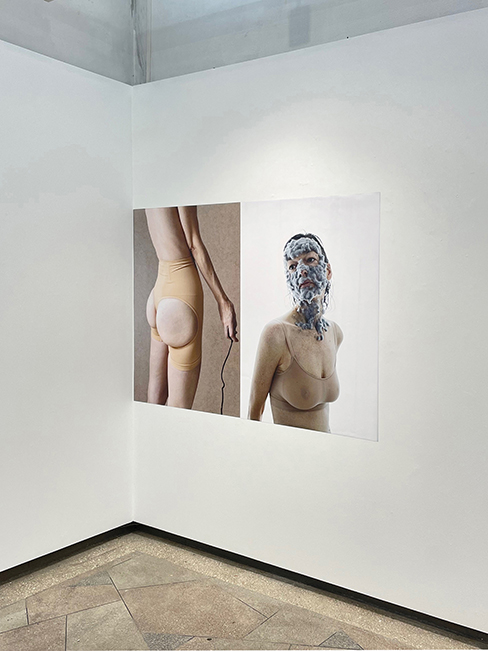
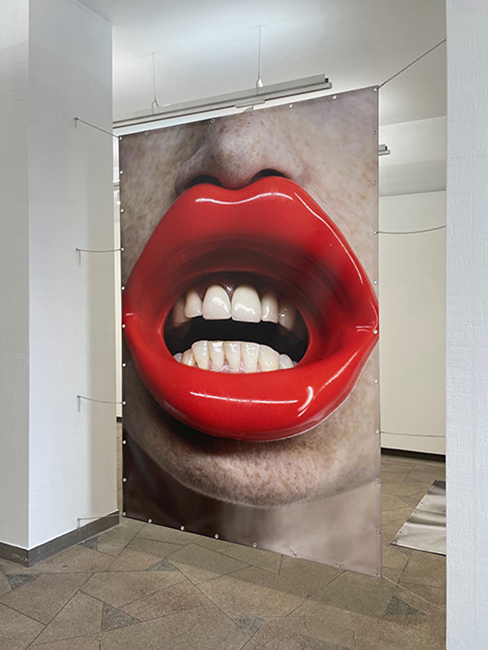
----------
2025
Stretching over one kilometer along the banks of the Rhône River, the exhibition Faces presents 270 portraits, ranging from unknown individuals to iconic figures from the past century and beyond.
----------
2025
New in the making - my series "Emates" as part of NFT andEditions project curated by Juste Kostikovaite.
The '&Editions' project presents digital works by renowned Lithuanian artists to art collectors and lovers. Visitors will be able to buy works by Jonas Mekas, a filmmaker considered to be a pioneer of avant-garde cinema, Tadas Černiauskas, an explorer of the intersection between architecture and digital art, Julija Goyd, a photographer experimenting with the concept of digital aesthetics, Zygimantas Kudirka, a poet combining poetry and technology, and Paulius Petraitis, an architect of ideas who explores the development of visual narratives.

----------
2024
My work as part of International Photography and Media Art Festival (Tarptautinis fotografijos ir medijų meno festivalis). The festival runs through October 1-31st at Mykolas Zilinskas Art Museum, Kaunas.
https://ipmafestival.lt/en/
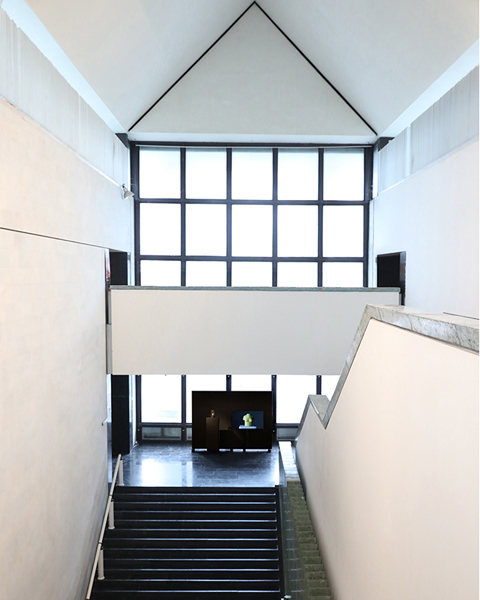
----------
2024
A group show "In-Between Spaces", curated by Ernst Burkel, hosted by 1-06 Berlin. Exhibition runs throughout 24.08.24-01.03.25, Willhelminenhofstr. 66, Berlin, Germany
https://1-06berlin.com
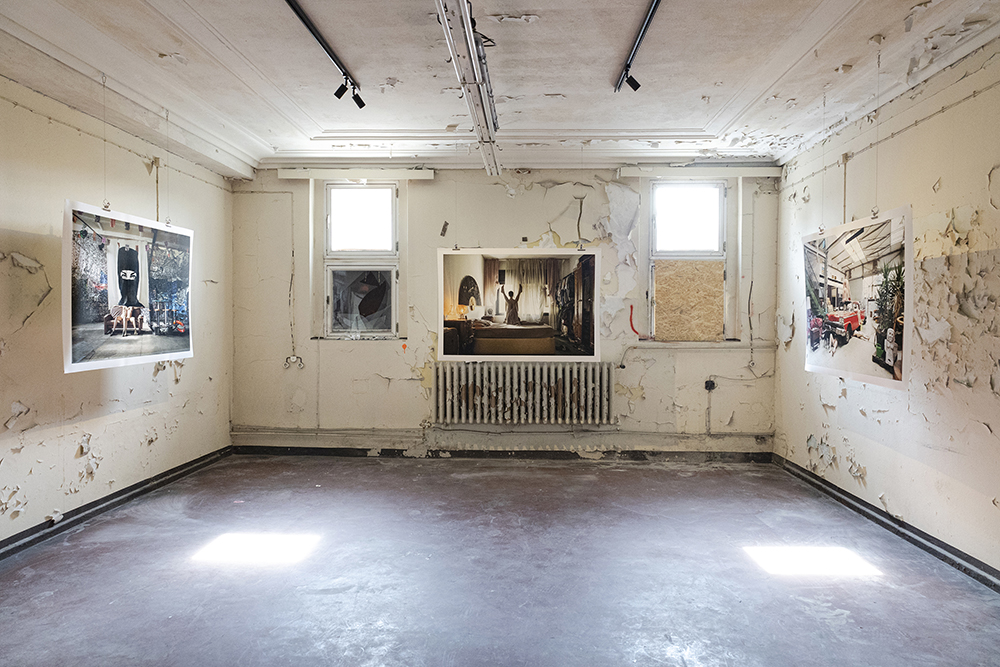
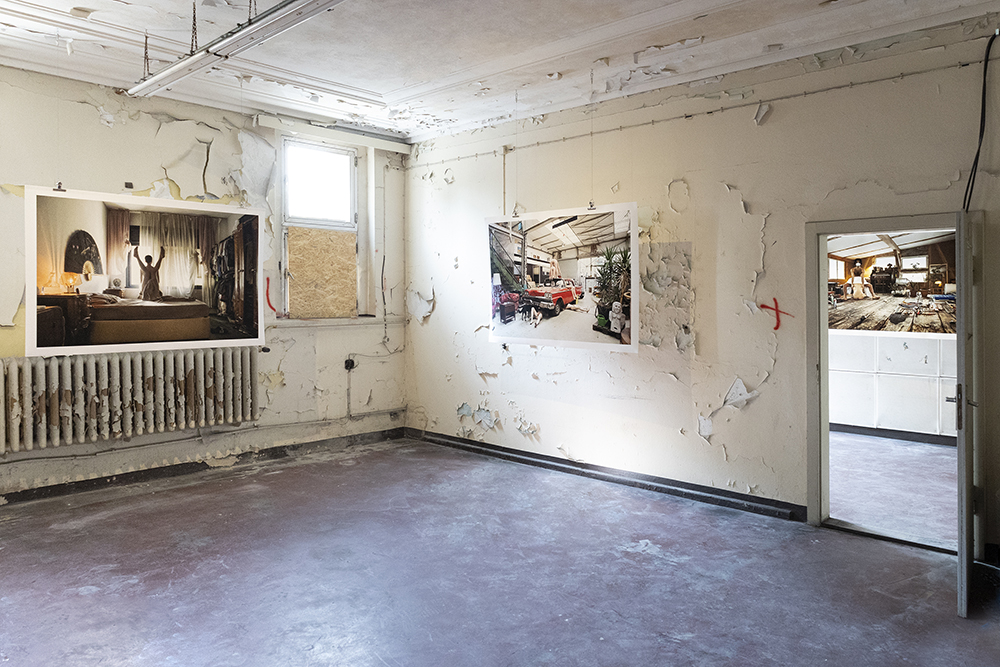
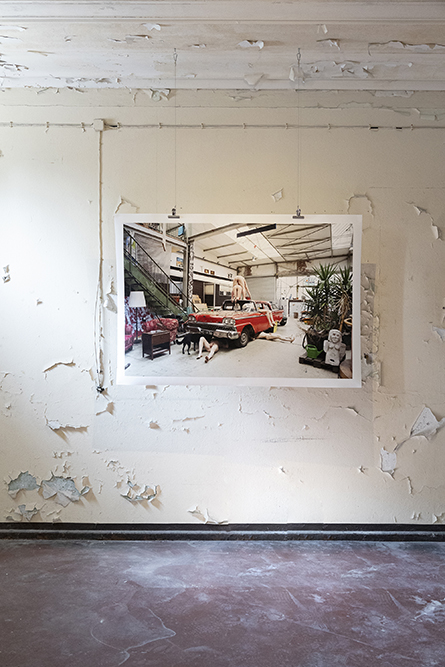
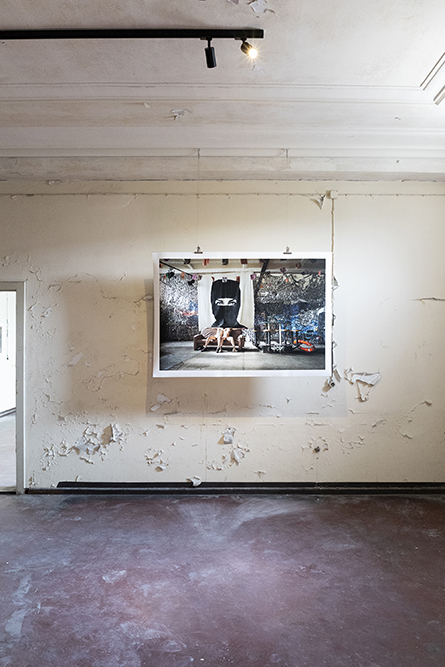
----------
2024
A group show "Pas Dormi", curated by Juste Kostikovaite, as part of a Culture Night Vilnius 2024 program. Exhibition runs throughout 07.06.24-28.06.24, at Drifts Gallery, Vilnius, Lithuania
https://driftsgallery.com/juste-kostikovaite-pas-dormir/
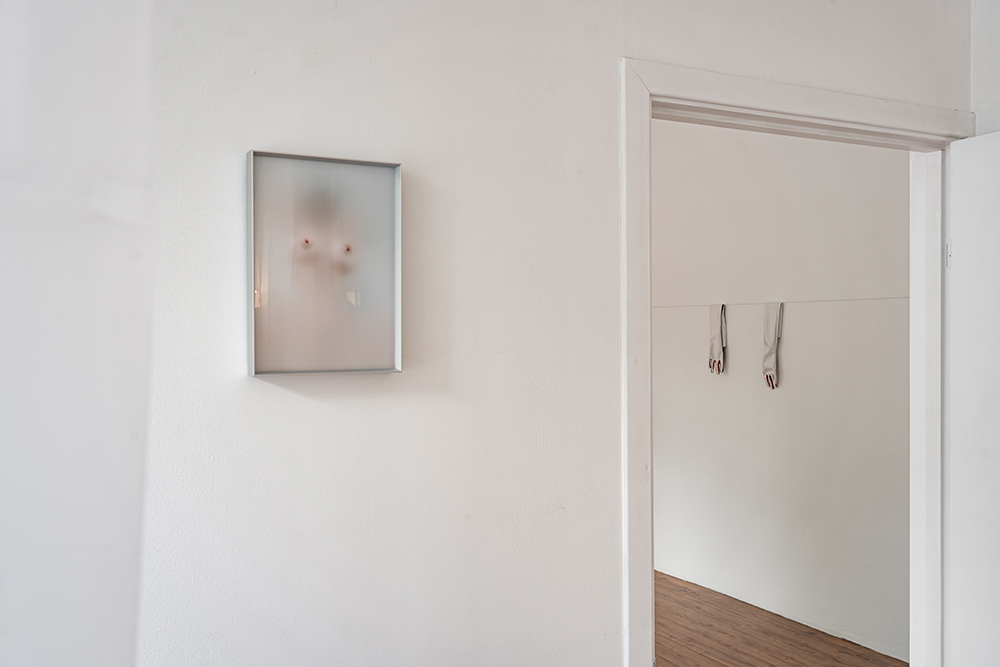
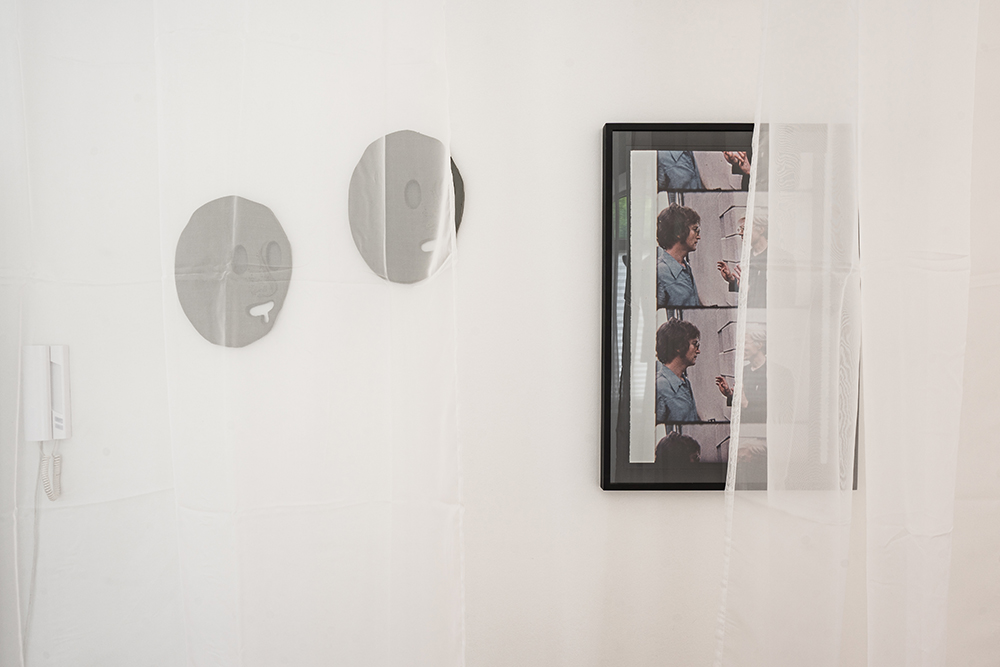
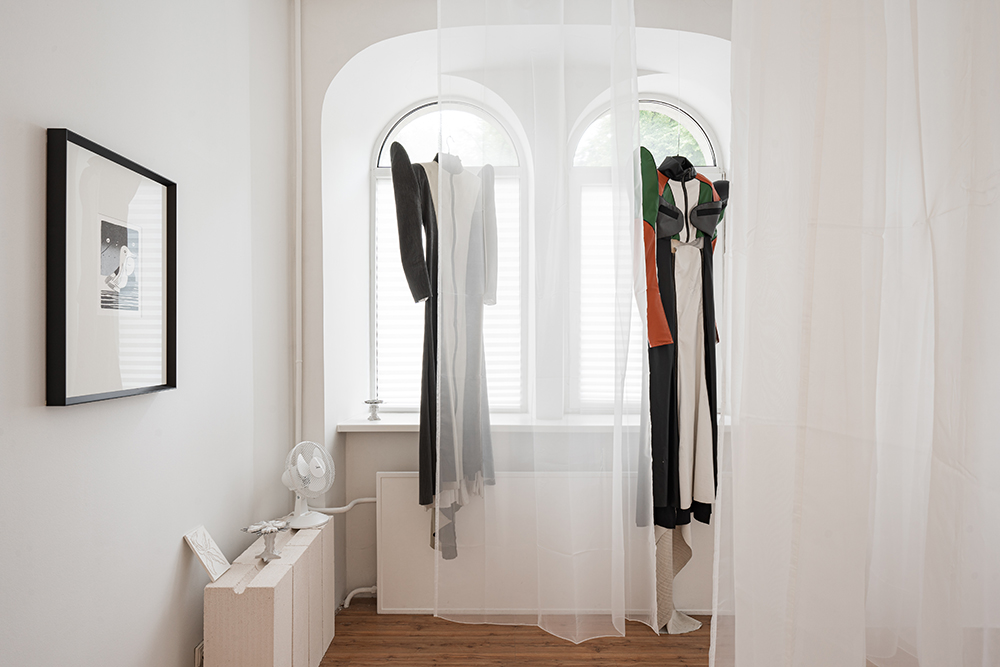
----------
2024
A group show "Korper Ansichten" at Galerie Monica Ruppert, Frankfurt am Main, 08.06.24-06.07.24
https://www.galeriemonicaruppert.de/exhibitions/koerper-ansichten
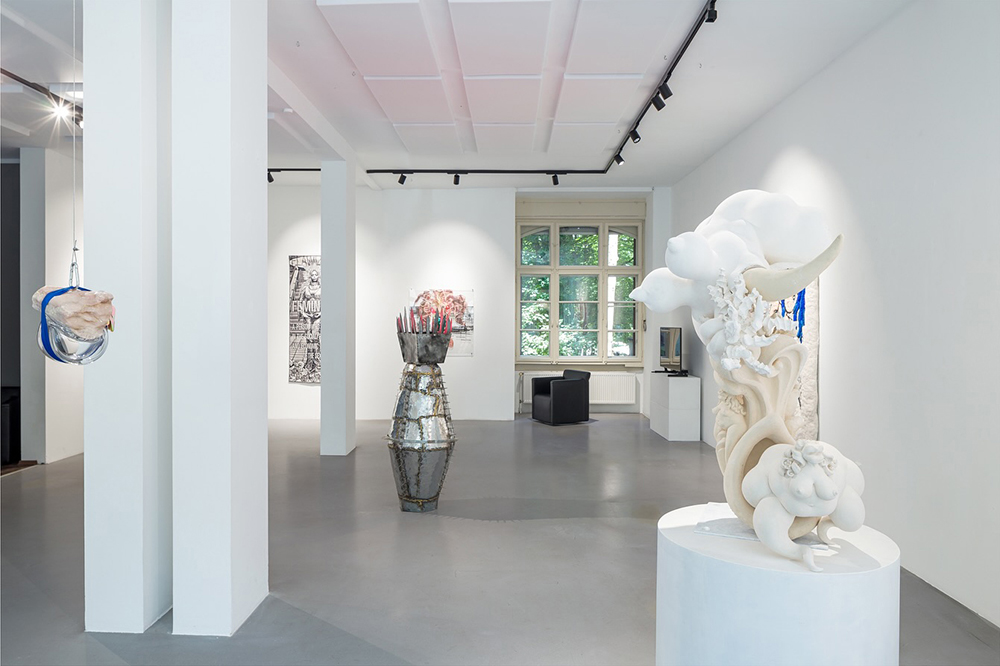
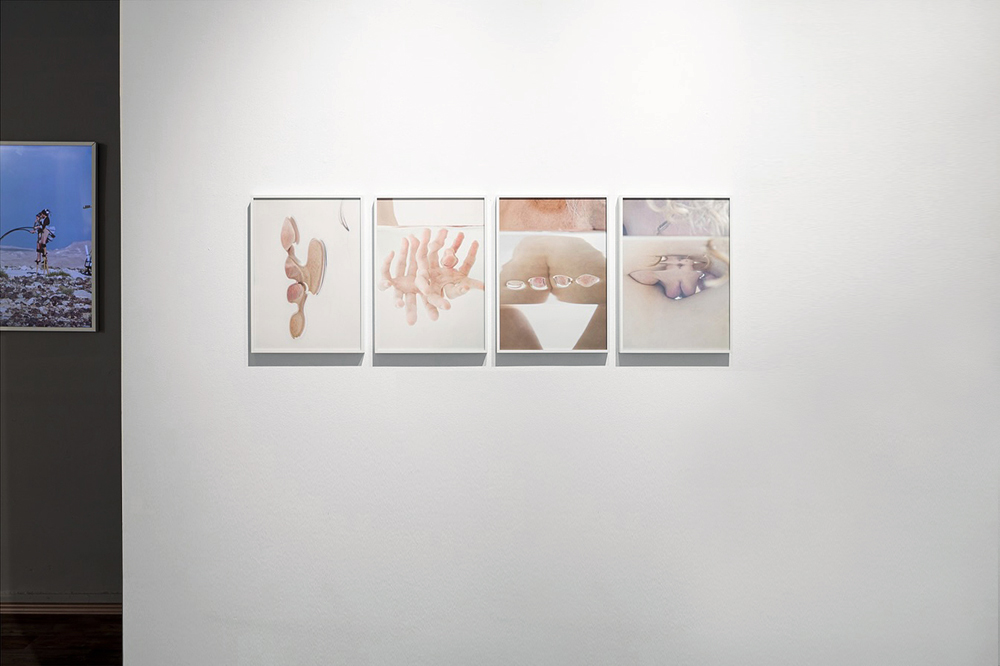
----------
2023
Work from series "The Habitat" in a group show "Zeitenwende", as part of a Gallery Weekend 2023 program. Exhibition runs through 27.04.23-20.05.23, at Contemporary Show Room, Friedrichstr. 69, Berlin
https://zeitenwende.art/

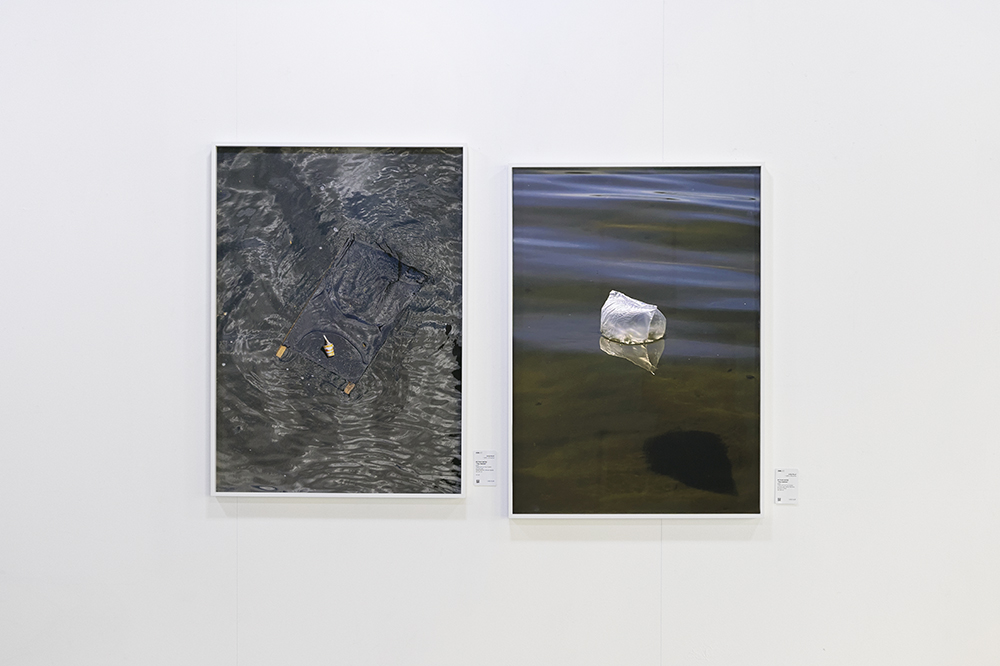
----------
2022
"Emates" in Separee Magazine Nr.33
https://separee.com/

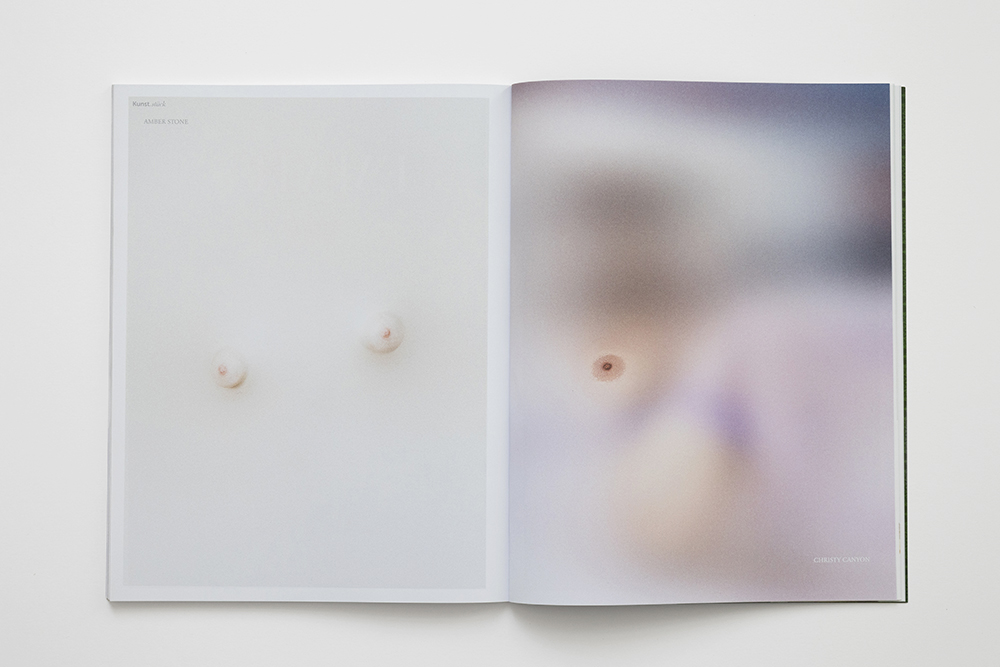

----------
2022
An interview in print magazine "Ombra Magazine". Issue 04, 2022
OM: Hello Julija, can you talk about you and how did you start with photography?
JG:I was born in Vilnius, Lithuania. Originally I was trained as an economist. I didn’t start working in photography and video right after my graduation, in between I changed careers from finances to acting. It was only after I settled in Berlin in 2010 that I started to be involved in the art scene and began my professional career in the creative field.
OM: How the project “Water to air” is born?
JG: This project developed gradually. At first, I started taking pictures of my friends at night on the lakes. The results were moving and mysterious. That imagery, caught at night with a flashlight in the dark basins, seemed to me to be some kind of gateway to an uncanny world, so immersive and transcendent. I decided to dig deeper into the subject of water and began searching for more unique and interesting representations. It took me some time to study the physics of light and its phenomenology, such as the refraction effect. I also spent hours watching documentaries about the underwater world, inspired by the alien forms of the species that live there. And after all these things and subjects had settled together, I knew I was ready to work on the “Water to air” series. These images are shot by placing a beam of light and a camera underneath water's surface. By entering underwater, we embrace not only a space, which is alien to our life and foreign to our survival, but also a space, which, due to its physical properties, changes the way we perceive it. The phenomenon, which in physics is called “Total Internal Reflection”, makes the water-to-air surface look like a perfectly silvered mirror. As a result, we look at strangely embodied beings, which resemble uncanny creatures floating in an internal solitude of seemingly endless space.
OM: Which are your inspirations?
JG: I usually get my inspiration from books. I enjoy reading science and philosophy. But that’s not my only source of inspiration – I’m easily moved by the work of other artists, as well as by everyday life situations or encounters that change or shift my perspectives. I think it’s an individual thing for everyone, but for some reason I’m convinced that this moment, which moves you to a different place (mentally or emotionally), is quite essential for the inspiration.
OM: How did you find your stories? What is the first thing that you make before start a project?
JG: I think stories always find me by themselves. The only thing I do is try to stay open and receptive. And if I feel, that I am triggered by something creatively, that it speaks to me and I can transform it, things happen without even forcing them – I do a lot of testing, researching and reading. It’s usually quite a complicated process before the final project is born, and there are times when it takes years before it’s finished. It took me sometime to learn to let go some ideas – sometimes I start working on something, but in the process I feel that I don’t yet know how to complete them, I simply leave it open. To some of them I never return, but there are some projects, which I restarted again after some years. I truly like the moment when I return to some of my old projects, because it reassures my own creative path.
https://ombramagazine.com/julija-goyd-water-to-air/
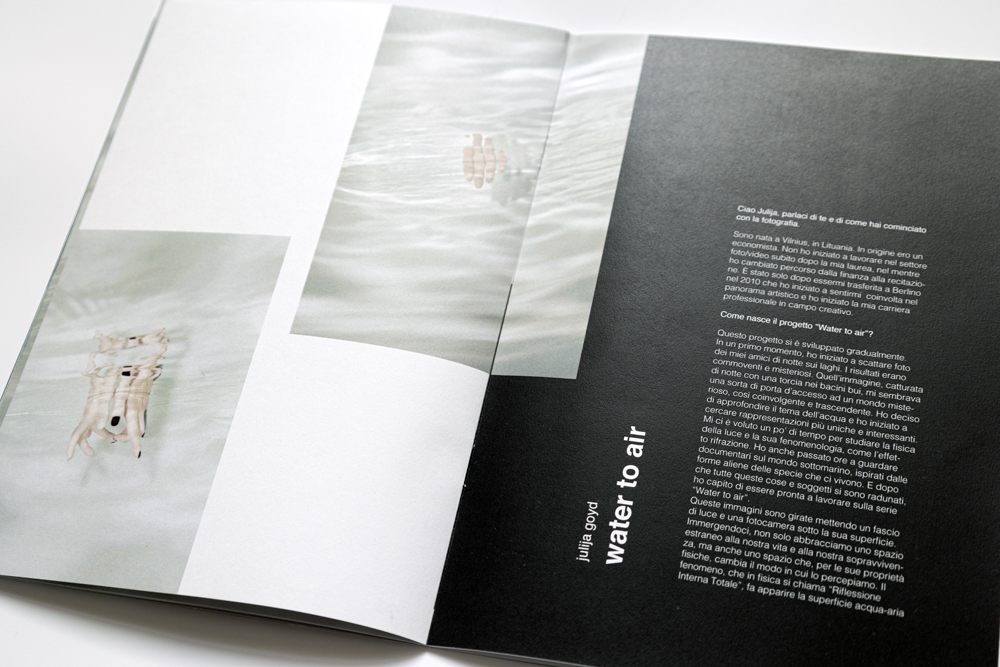

----------
2021
“Daphne Rosen" (2021) from series “Emates” as part of "Direkt Auktion II" through 14.AUG-25.SEPT. Curated by Mascha Naumova & Grigori Dor.
https://www.direkteauktion.de/
----------
2021
A group show "Fumes and Perfumes 8.0" at Zublin Parkhaus, Stuttgart. The exhibition can be visited daily through 07.2021-07.2022.
https://www.fumesandperfumes.de/
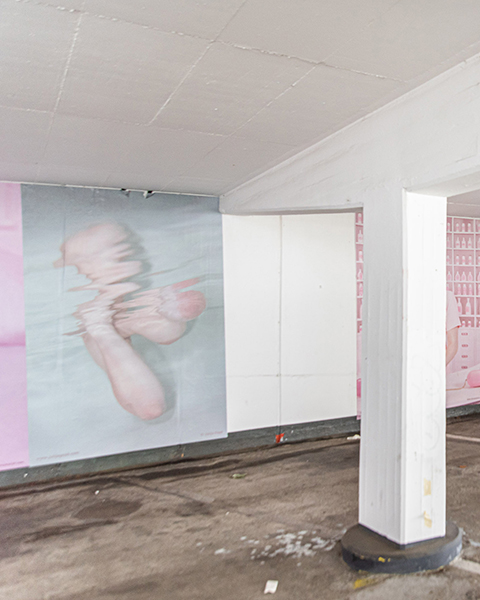
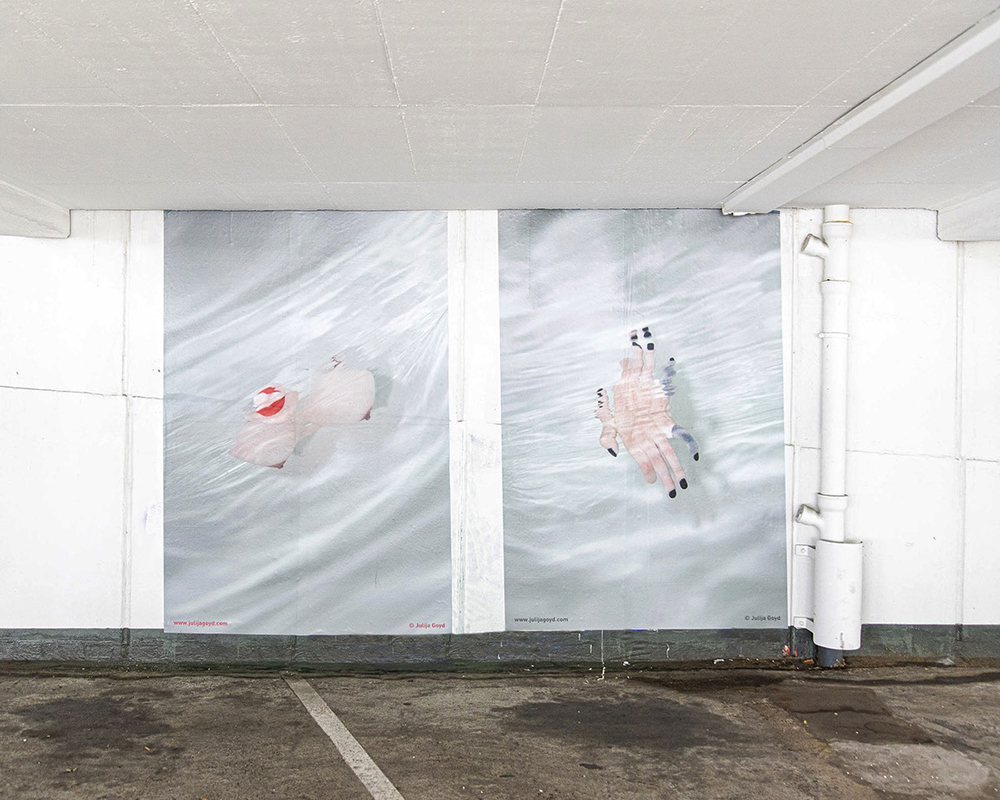
----------
2021
A group show "Timestamps" (Lithuanian media art retrospective) in National Gallery of Art, Vilnius, Lithuania. Curated by Jurij Dobriakov.
http://www.ndg.lt/exhibitions/present/timestamps.aspx


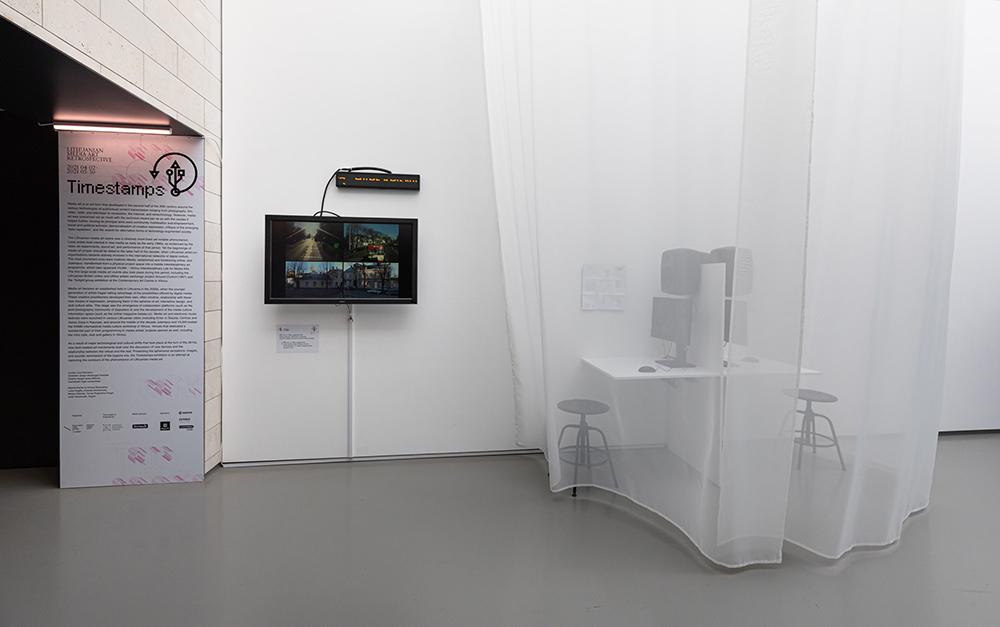
----------
2021
The album "Rinktiniai vaizdai (Selected works) 2017-2020" features a selection of Lithuanian visual artists, published in the culture magazine "Nemunas". The artists' works are complemented by insights from art critics Silvija Butkutė and Vidas Poškus, written especially for this publication.
https://www.nemunas.press/parduotuve/rinktiniai-vaizdai-nemunas-2017-2020/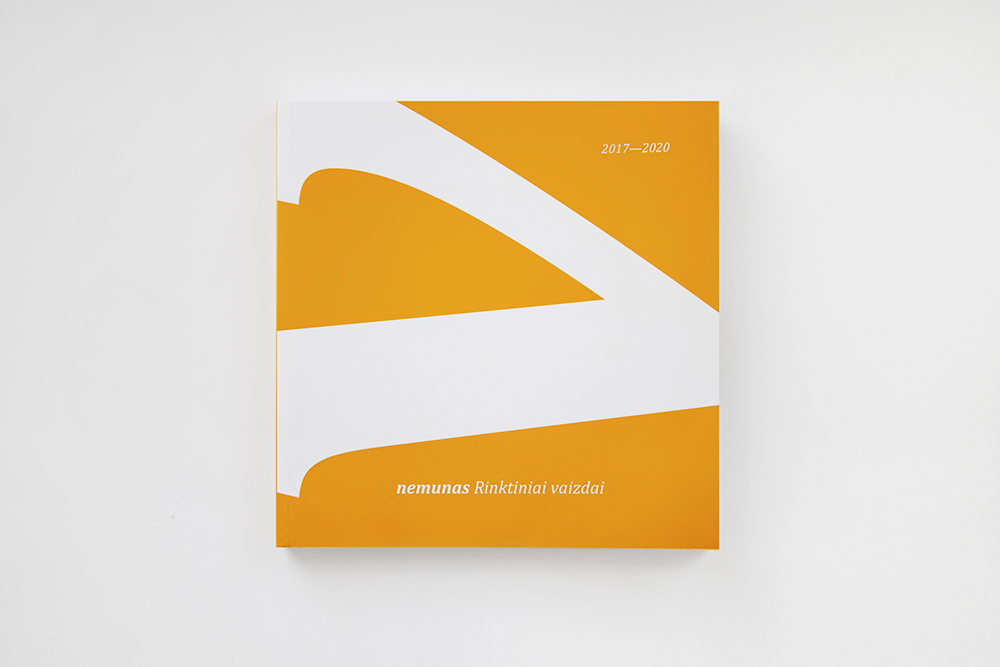

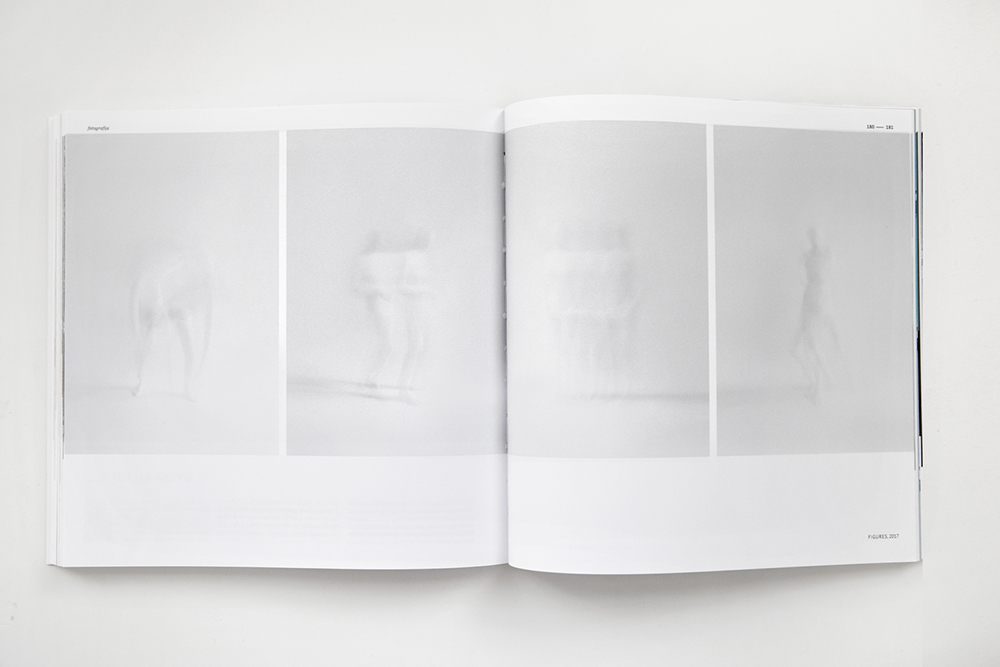

----------
2020
My work as part of FRESH EYES photo fair, which took place in Amsterdam Sept 16-20th in the amazing building in Westergas. thank you GUP magazine and the team for organizing this beautiful event !!
https://gupmagazine.com/events/fresh-eyes-photo-fair/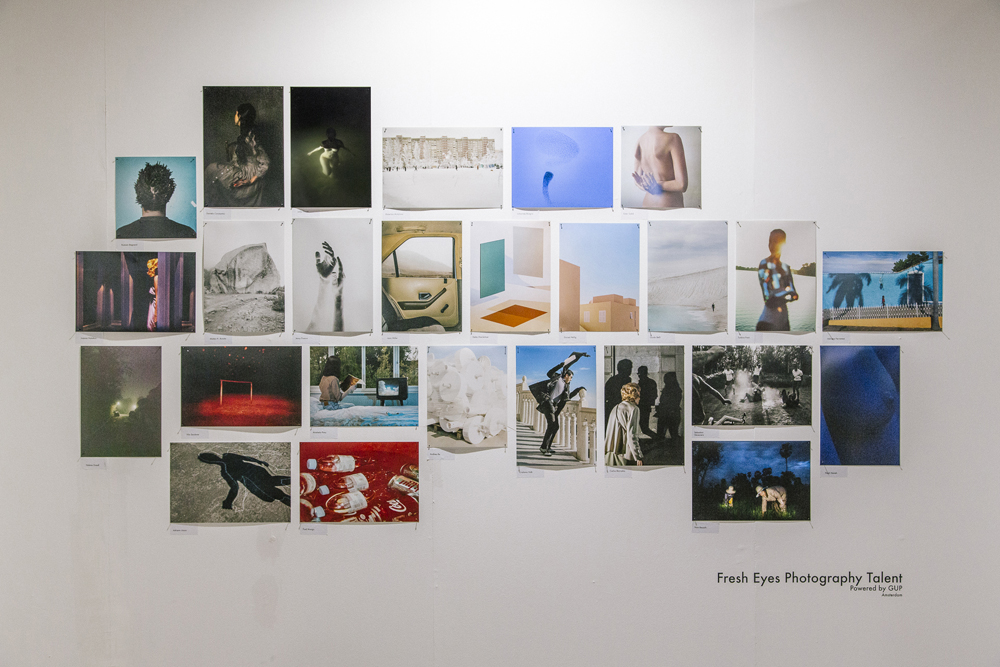
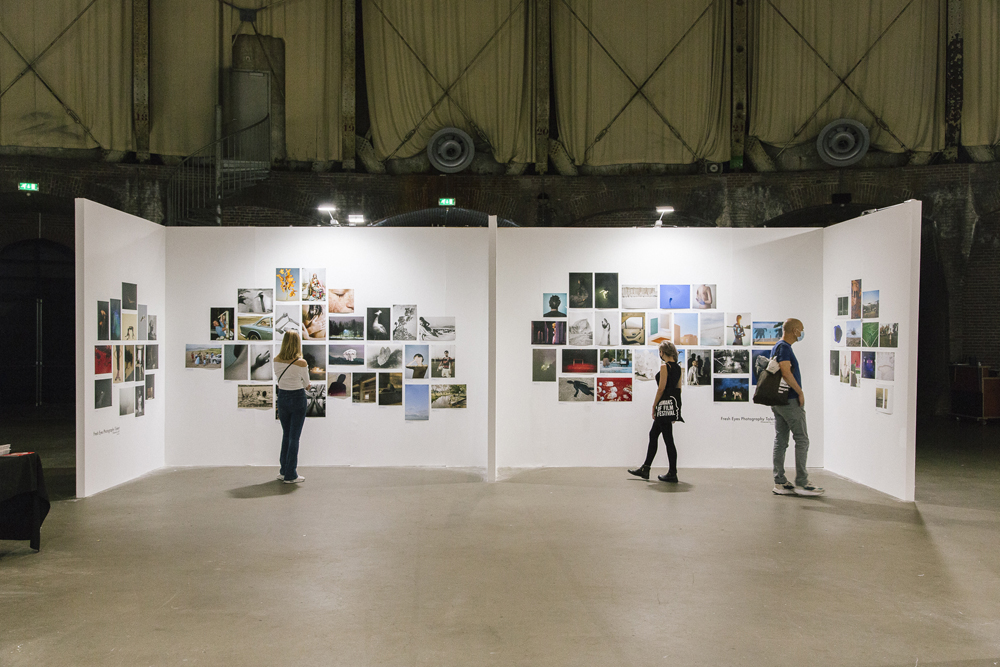

----------
2020
Series "Emates" featured in Mein Heimliches Auge 35 (Das Jahrbuch der Erotik XXXV). This book is a long lasting tradition (for more than 30 years) of eroticism and sexuality related images, texts, essays, poems and conversations published by Konkursbuch Verlag Claudia Gehrke.
https://www.konkursbuch-shop.com/themen-auge-2020/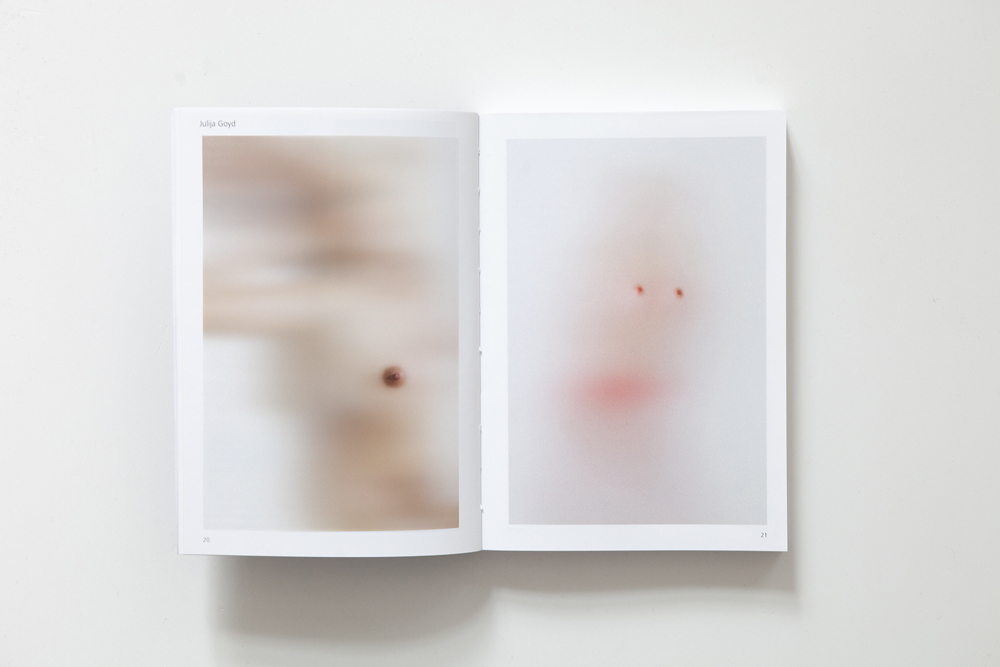

2020
The book “Fresh eyes” featuring best european emerging photographers of 2020, selected by GUP magazine:
https://shop.gupmagazine.com/collections/books/products/fresh-eyes-2020



----------
2020
The exhibition "Milieu" of Berlin-based artists Julija Goyd and Agne Juodvalkyte features photographs, contemporary paintings and objects focused on body and water. In their own way, the artists study the remnants of memory and the flow of time in real and anthropomorphic bodies by immersing them in water or pouring it on them. The exhibition becomes a specific zone – a milieu, where unique principals take place: light refracts, one encounters internal reflections as well as immerses in transcendent time. Here space acts as a state of transition, a threshold between infinite time and bodily fragility and entropy.
http://www.av17gallery.com/en/exhibition/milieu/
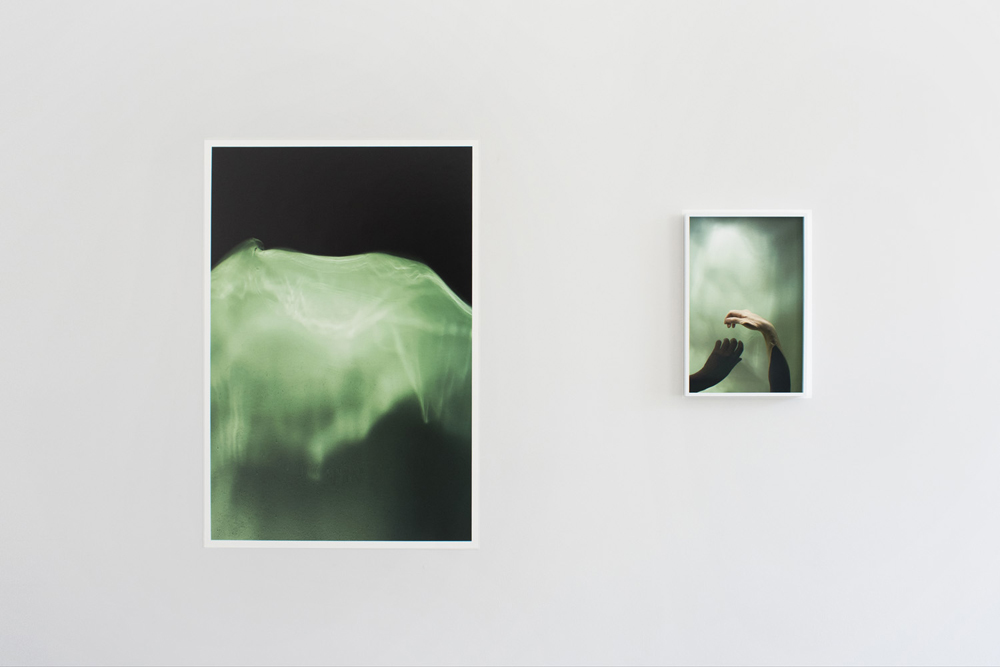

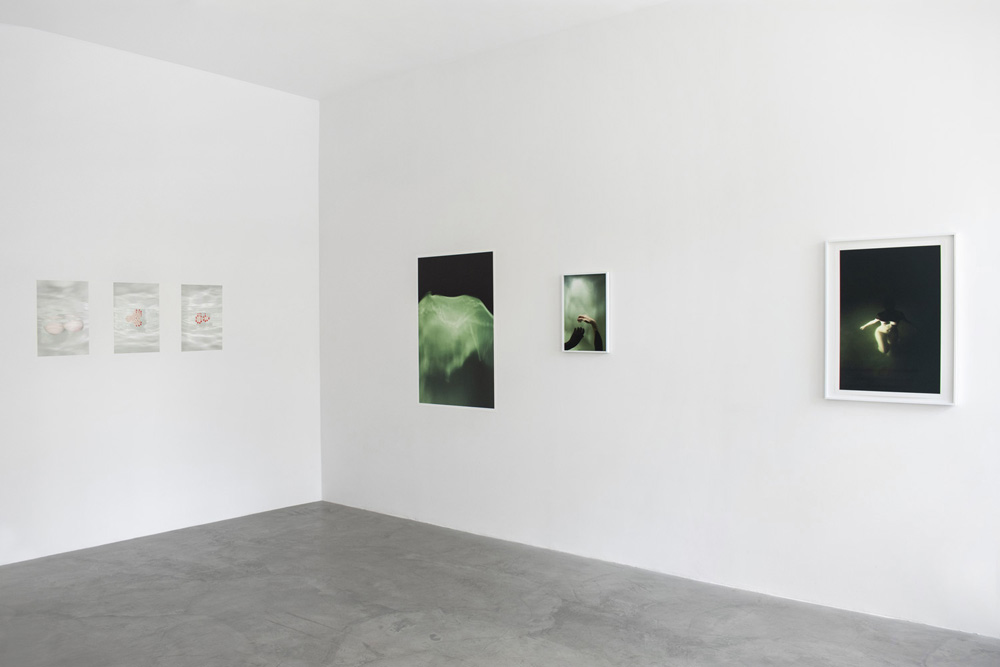

----------
2020
Sincere thanks to LIFE FRAMER for a feature!
https://www.life-framer.com/photographer/julija-goyd/

----------
2020
Cover photos for 2raumwohnung 20 year best-of album.
Graphic design by studio Y U K I K O.
https://www.2raumwohnung.de/
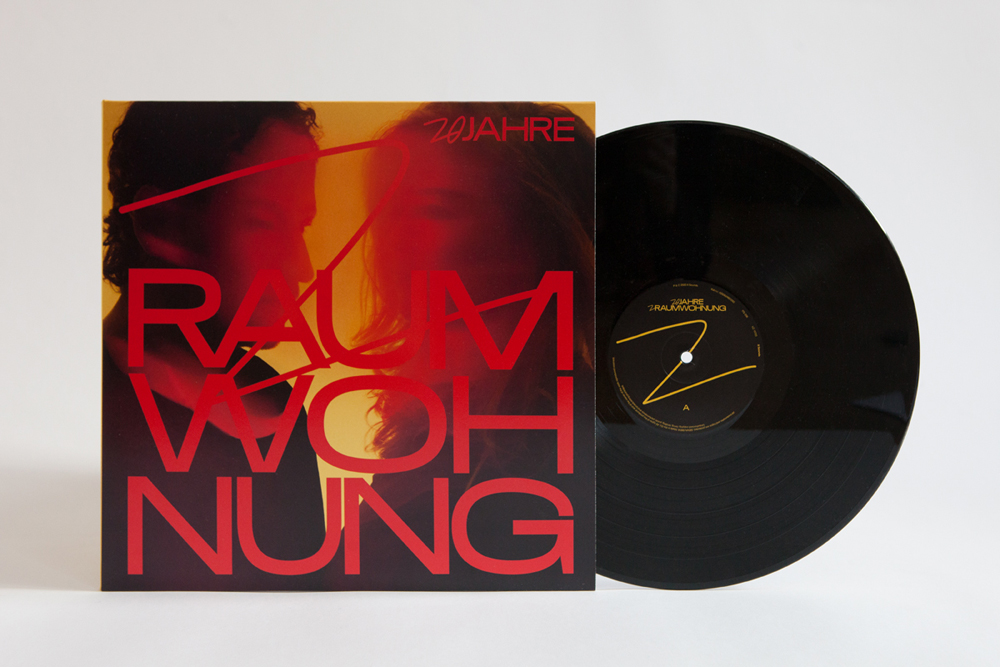


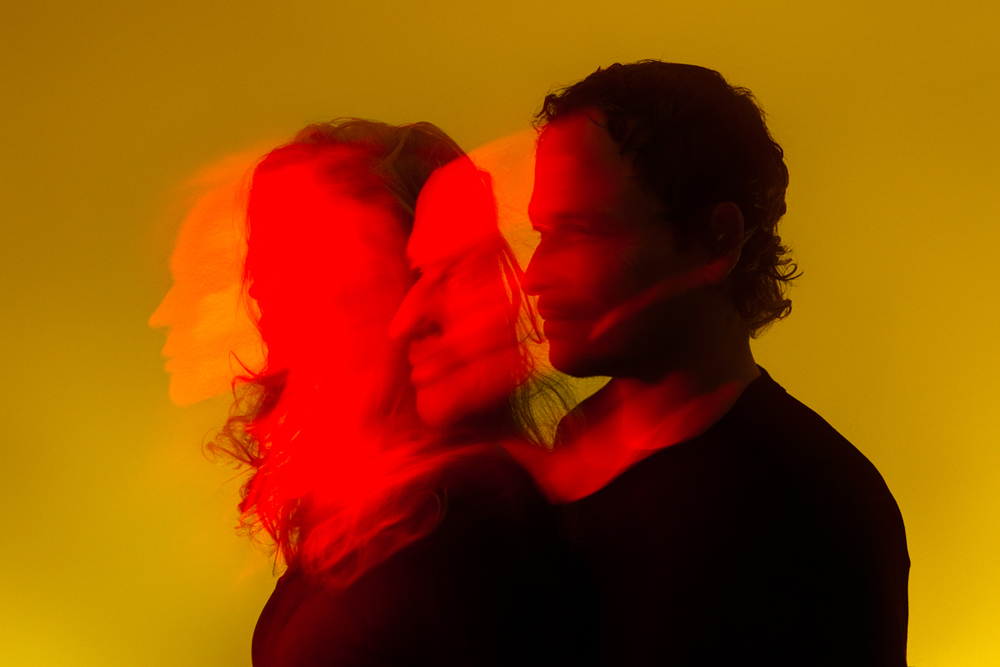


----------
2020
Together with a youth charity organization Youth against AIDS and agency Loved we created a sex education book for kids and teens world wide, in which the questions of the generation are openly collected and answered.
So honored to find our recent project "Boobs", curated by Saralisa Volm and Britta Adler, featured in this book, as well as my work from series "Emates" !
https://jugend-gegen-aids.de/buch

2020
Work from series "A beam of light for boundary's sight" on display at The Ballery.
https://theballery.com/Work from series "Water to air" during an exhbition "Photospiel" at Karl Oskar Gallery.
https://www.karloskargallery.com/

2020
Feature in Mein heimliches Auge 34 (Das Jahrbuch der Erotik).
This book is a long lasting german tradition of eroticism and sexuality related images, texts, essays, poems and conversations, published by Konkursbuch Verlag Claudia Gehrke.




----------
2019
Framed photographs from series "A beam of light for boundary's sight" as part of a group exhibition at Karl Oskar Gallery
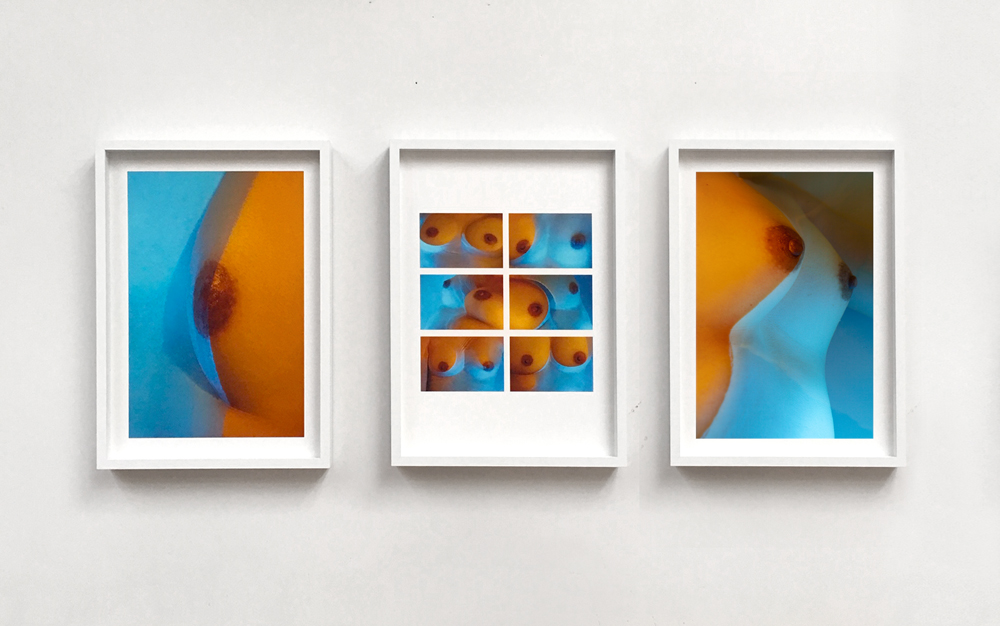
----------
2019
Great thanks to Poison Berlin for a feature:
https://blog.poison-berlin.com/2019/02/05/bilderregen-julija-goyd/
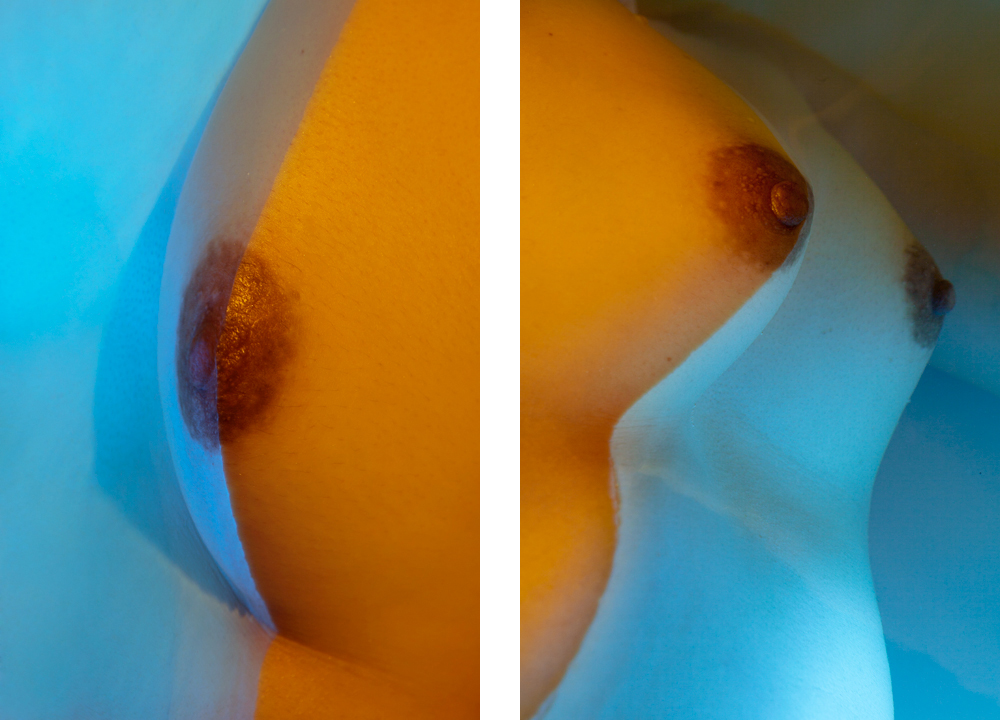
----------
2019
Our group exhibition "Half the world belongs to us" at Galerie Futura, curated by Anke Schulz::
https://www.galeriefutura.de/en/die-haelfte-der-welt-gehoert-uns-feministische-plakate/
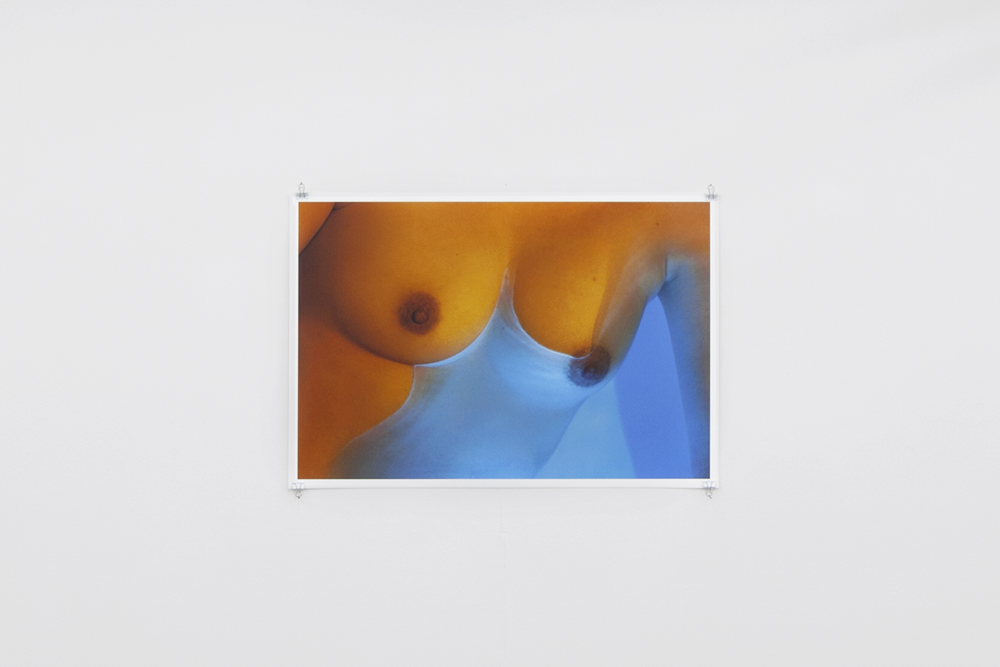
----------
2018
Solo exhibition "A beam of light for boundary's sight" at Panke Culture, Berlin
http://www.pankeculture.com/julija-goyd-a-beam-of-light-for-boundary-sight-exhibition/

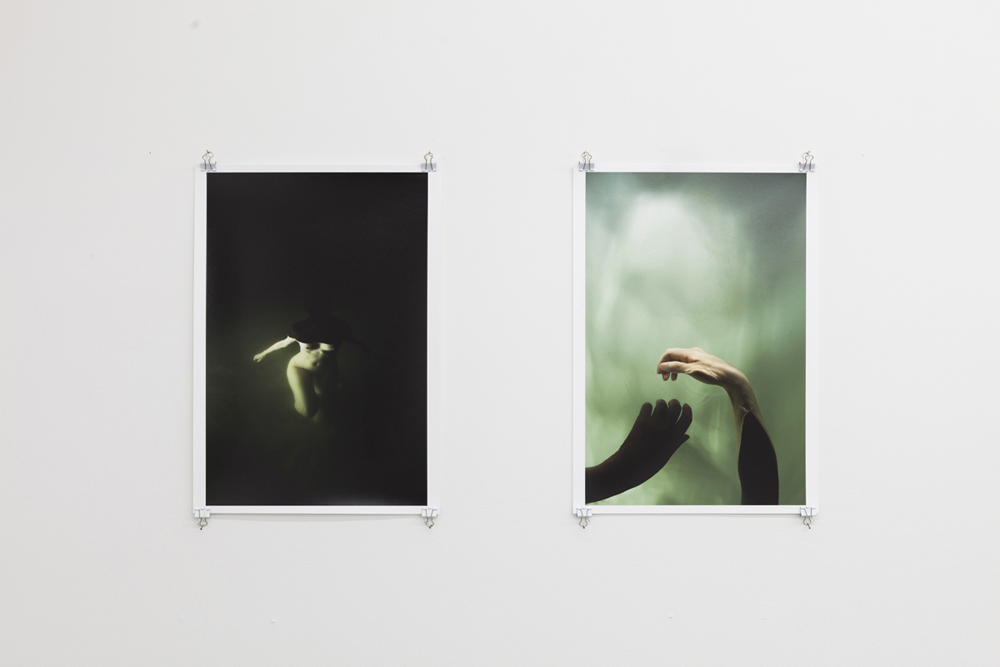

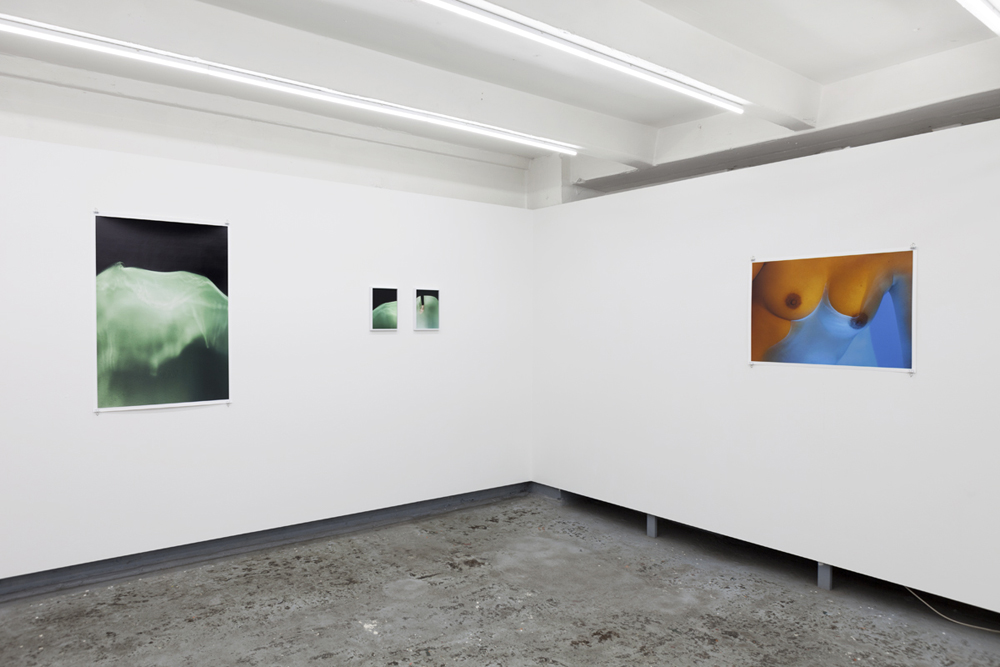


----------
2018
Very happy with a quality of test prints - in preparation for solo exhibition at Panke Culture, Berlin
http://www.pankeculture.com/julija-goyd-a-beam-of-light-for-boundary-sight-exhibition/
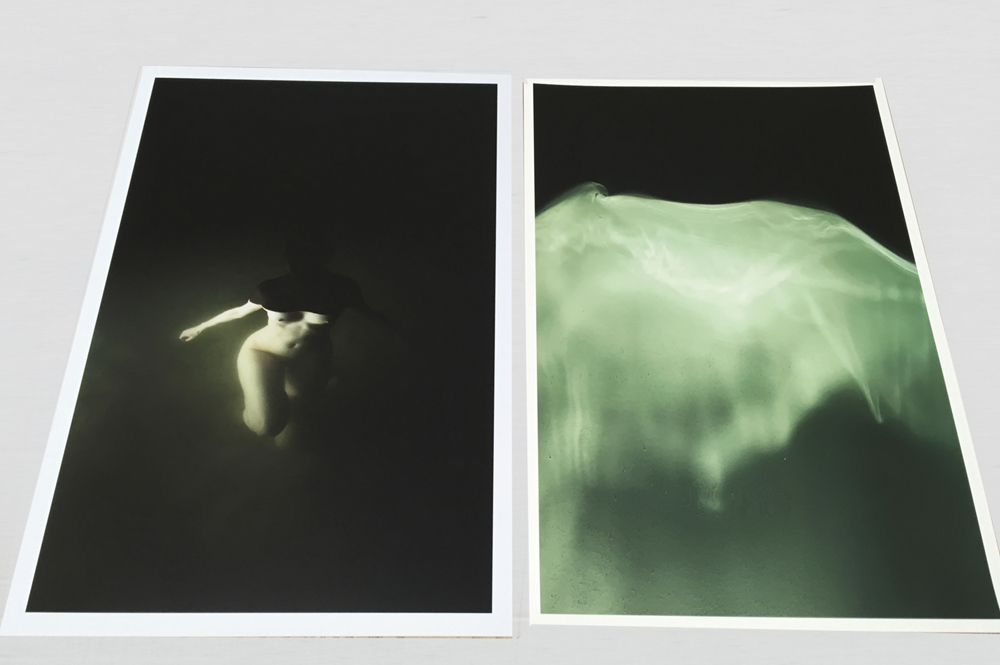
----------
2018
Series titled “A beam of light for boundary's sight” investigates separation and alienation of the space by placing a source of light under the water’s surface. Water is about 800 times denser than air. It slows the speed of light and bends its rays. This so called refraction effect draws a boundary between 2 completely different worlds: the space we live in and the space underwater, which is so foreign to our survival..
For this series I used two sources of light - one above and one below the surface of water - both covered with different color filters.

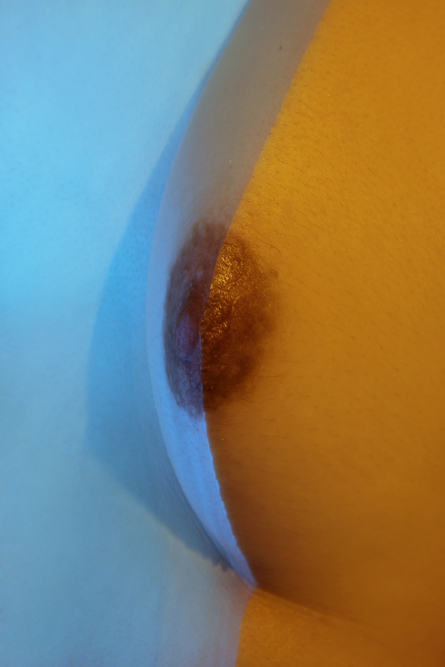


----------
2018
Work review and feature in Lithuanian mazagine "Nemunas", text by Enrika Strogaite
Julija Goyd. Išrengtas nuogumas
Juliją Goyd, jau dešimt metų Berlyne gyvenančią fotografę, pasaulis yra pripažinęs – jos darbai pateko į garsią meno istoriko ir leidėjo Peterio Weiermairo nuogo kūno fotografijos tarptautinę antologiją „The Naked & The Nude“ („Nuogieji ir nuogumas“, 2013), kurioje pristatomi tarptautinę šlovę pelnę fotografai. Tačiau, nors ir išgarsėjusi svetur, J. Goyd teigia esanti lietuvė, net jei jos šeimos šaknys ir siekia gerokai plačiau.
Goyd, akivaizdu, nėra lietuviška pavardė, ji priklauso Julijos seneliams, kurie dar prieš Antrąjį pasaulinį karą gyveno Lenkijos teritorijoje. Po karo šeima buvo ištremta į Kazachstaną, o po tremties įsikūrė Lietuvoje. Pati fotografė gimusi Vilniuje.
Tačiau klausimas „kas esi?“, savotiškas tapatybės iš(si)grynimas, yra bene svarbiausias motyvas Julijos fotografijose – ir griežtai minimalistinėse (serijos „The elegant still“, „Emates“, „Figures“), ir sodriai butaforinėse (serija „Themselves“), ir ryškiai kinematografinėse (magiško realizmo serija „Dreamscapes“ – tarsi kino filmų stop kadrai).
Taip pat akivaizdu, jog J. Goyd ypač svarbus, gal net svarbiausias yra erotiškumas (fotografijų, meno apskritai, gyvenimo). Tačiau erotiškumo ir pornografijos ar banalybės ribos – ypač plonos, jis suprantamas labai plačiai ir, tuo pat metu, itin siaurai: mes jį akimirksniu atpažįstame, pajaučiame. Todėl apgauti, gudrauti ar žongliruoti erotiškumo korta beveik neįmanoma, tai gana greitai demaskuojama, o sufalsifikuotas erotiškumas – ypač nemalonus. Tikrumas čia būtinas. Kodėl pornografija nėra erotiška? Nes ji – gryna prekė, neturinti jokios paslapties, gylio. Prancūzų kultūros teoretikas Roland’as Barthesas pasakytų, jog pornografijoje nėra jokio punctum – intuityviai nujaučiamos reikšmės. Tačiau J. Goyd sugeba ją padaryti erotiška: iš pornografinių tinklalapių pasirinkdama nuotraukas, fotomenininkė jas perdirba, atimdama galimybę iš mūsų pamatyti visą kūną, iškadruodama tik krūtų spenelius. Paradoksas, bet pornografinio atvaizdo dalis virsta erotika, gundančiu žvilgsniu ar netikėta užuomina į kažką gilesnio.
Bene iškalbingiausias Julijos fotografijose – žmogaus kūnas, ir nors apranga dažnai perduoda daugiau informacijos nei nepridengta oda, menininkei pavyksta žmogų „išrengti“ taip, jog kūno paviršius nebėra galutinis tikslas, o tolimesnės kelionės nuoroda. Tačiau ne mažiau svarbi tema yra ir pats nuogumas. Regis, mums reikia nuolat priminti, kad iš esmės esame nuogi ir visoms savo dvasinėms bei intelektualinėms klajonėms turime pasirinkti būtent šį atskaitos tašką.
Siurrealistinėje serijoje „Themselves“ – nemažai šiurpą keliančių atvaizdų, jie persmelkti apokaliptinės baimės, ir, tuo pat metu, humoro, kuriuos pasitelkus kalbama apie rimtus dalykus. Nuogumas čia suvokiamas kaip visiškas atvirumas sau ir pasauliui. Taip pat ir mirčiai. Beje, šioje serijoje beveik nėra erotikos. Nepridengtas žmogaus kūnas pats savaime nėra erotiškas (veikiausiai dėl to, kad tikrai nuogas žmogus būna tik gimdamas ir mirdamas, o visais kitais atvejais – net užsiimant seksu – nuogumas tik simuliuojamas). Iš tiesų nuogi mes esame vienui vieni, antraip įsitraukiame į įvairius paslapties / atvirumo žaidimus. Jie skirti kitiems.
Tai sudėtingos, nevienareikšmiškos temos. Todėl, pasak Julijos, jos darbų žiūrovas yra laisvas rinktis, ką pamatyti nuotraukose, viešai apie tai kalbėti ar tylėti.
(Julia Goyd, a photographer living in Berlin - her works are part of the famous anthology "The Naked & The Nude", which presents internationally acclaimed photographers and is curated by art historian and publisher Peter Weiermair. Although she has become famous abroad, Goyd claims to be a Lithuanian, even if her family's roots are further away.
Goyd, obviously, is not a Lithuanian surname, it belongs to Julija's grandparents who lived on a Polish territory before the World War II. After the war, the family was sent to Kazakhstan, and after they settled down in Lithuania. The photographer herself was born in Vilnius.
The question "Who are you?", a peculiar identity of the purity, is perhaps the most important motif in Julija's photographs – which is obvious in strictly minimalist series "The elegant still", "Emates", "Figures", also heavily butaforous series "Themselves ".
It is also evident that for Goyd is particularly important, perhaps the most important, eroticism (in photography, art in general, and in life). But the limits of eroticism and pornography or banality are extremely thin, it is understood very broadly and, at the same time, extremely narrow: we instantly recognise and feel it. Therefore, it's almost impossible to deceive, trick or juggle an erotic card, it's fairly quickly revealed, and false eroticism is especially unpleasant. Reliability is necessary here. Why pornography is not erotic? Because it is pure commodity without any mystery. French cultural theorist Roland Barthes would say that pornography has no punctum - intuitive meaning. However, Goyd is able to make her erotic: she picks up photos from pornographic web pages, removing the possibility of seeing the entire body, showing only the breast nipples. A paradox, but a part of a pornographic image turns into erotic, an enticing look or an unexpected hint of something deeper.
The most eloquent is the human body in Julija's work, and although the outfit often transmits more information than uncovered skin, the artist manages to "disassemble" the person so that the body surface is no longer the ultimate goal, but the reference to a further journey.
Apparently, we need to constantly remind us that, in essence, we are naked and we must choose precisely this starting point for all our spiritual and intellectual wanderings.
The Surrealist series "Themselves" has a number of terrifying images that permeate the apocalyptic fears and, at the same time, humor, which involves talking about serious things. Nudity here is perceived as a complete openness to ourselves and the world, also, death. By the way, this series is not erotic. The uncovered human body is not erotic in itself (probably because a person is really naked only when he is born and dead, and in all other cases, even in the case of sex, nudity is only simulated). In fact, we are the only "naked" when we are on our own; otherwise, we engage in various secrecy / openness games. These are complex, ambiguous themes. Therefore, according to Julija, her viewer is free to choose what to see in pictures, publicly talk or remain silent.)
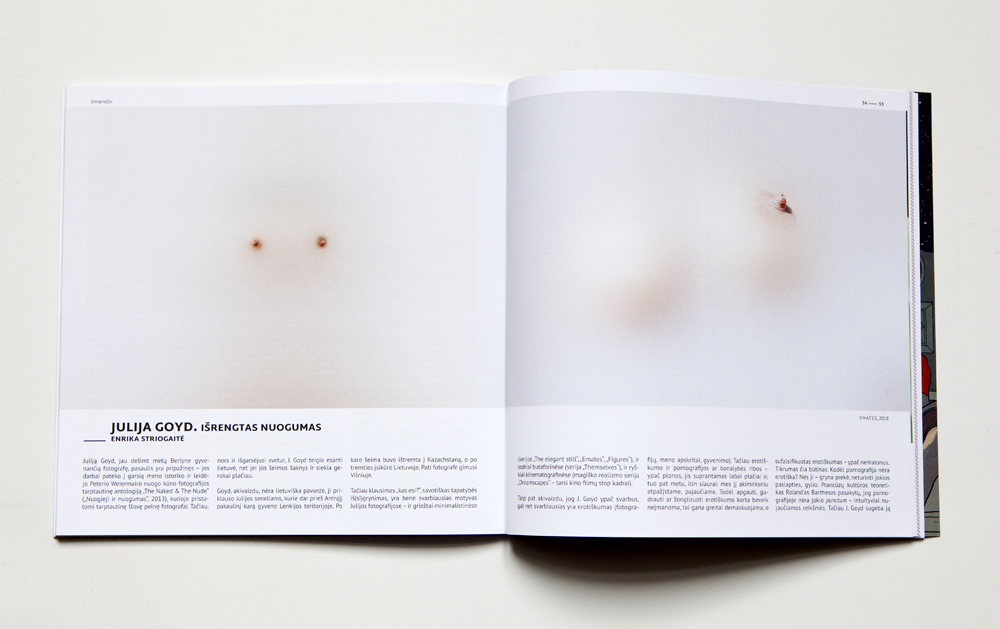



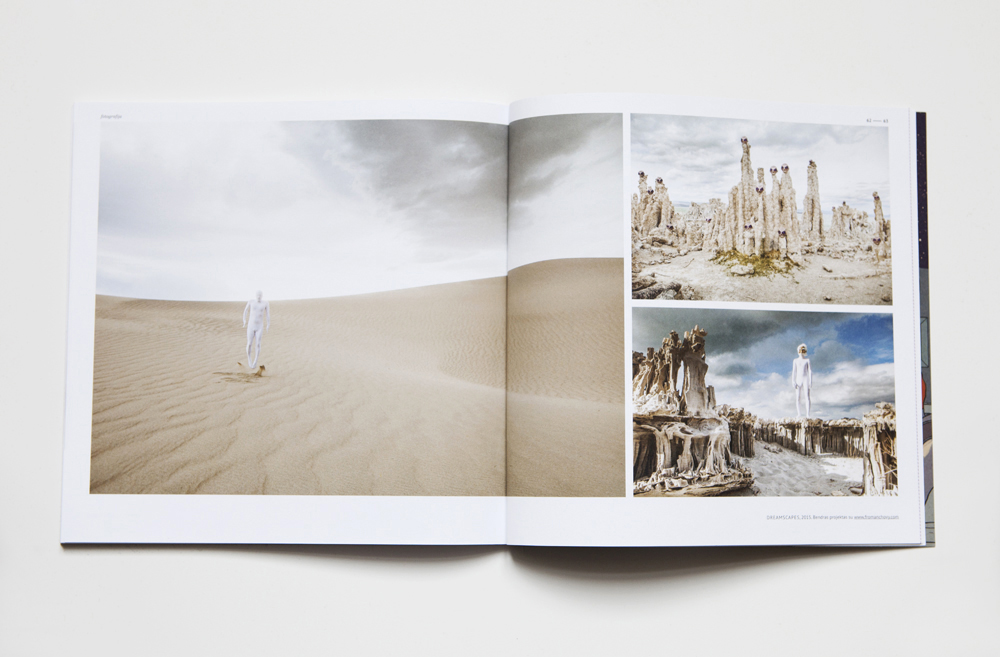
----------
2018
Exhibition with Violeta Bubelyte, Galerie Goerlitz::

----------
2018
You can find these beautiful prints on Poison Berlin online store:
----------
2018
So happy to find my work being featured on Ignant !!!
https://www.ignant.com/submissions/a-beam-of-light-for-boundary-sight/

----------
2018
Work review and feature, P01int magazine:
https://p01ntmagazine.com/2018/06/28/on-water-and-light/
I’ve always been interested in the body and how it is represented in the arts. From an early age, I went to a professional dancing school in Vilnius (Lithuania). All I dreamt of was dance. But when I grew older my dance teacher told me that I was not physically suited to becoming a dancer – I was simply growing too tall. I had to decide very quickly what my profession was going to be. People convinced me to study economics.
To begin with, my career was very exciting. I still remember those days as if it were some kind of movie. It was a period of sudden economic growth in Lithuania. The country was flourishing. I found myself dealing with important and interesting topics in business management and my work gave me an intense sense of accomplishment. It took me four years of working in finance to realise I actually wanted something completely different.
I was very lucky that around the same time, just by chance, I was offered two main female roles in two Lithuanian feature films. It was only during that transition period that I realised my interest in film and images. I bought a camera and have been making my way with it until now. I settled in Berlin and have dedicated myself to photography and filmmaking since 2010.
My early practises and works balance the natural decay of bodies with its exploitation within social and economic boundaries. Lately my focus has shifted more towards abstract representations, involving subjects of eroticism and studies of nature, mainly focusing on subject of water.
I can stare at water for hours. It hypnotises me.
Water is about 800 times more dense higher than air. It slows the speed of light and bends its rays. This is called the refraction effect. By placing a beam of light underneath the water surface, it is quite astonishing to see such a clear separation line between 2 completely different worlds – the space we live in and the space underwater, which is so foreign to our survival.
I’m careful not to spoil my interest in water with convoluted interpretations. Water is imbued with connotations of eroticism and transcendence anyway, and I am happy if I manage to capture that in my work, but I try to stay open to other meanings and, if possible, dive even deeper into exploring its nature as a physical space.
This series investigates the separation and alienation of space. I placed a source of light under the water’s surface.
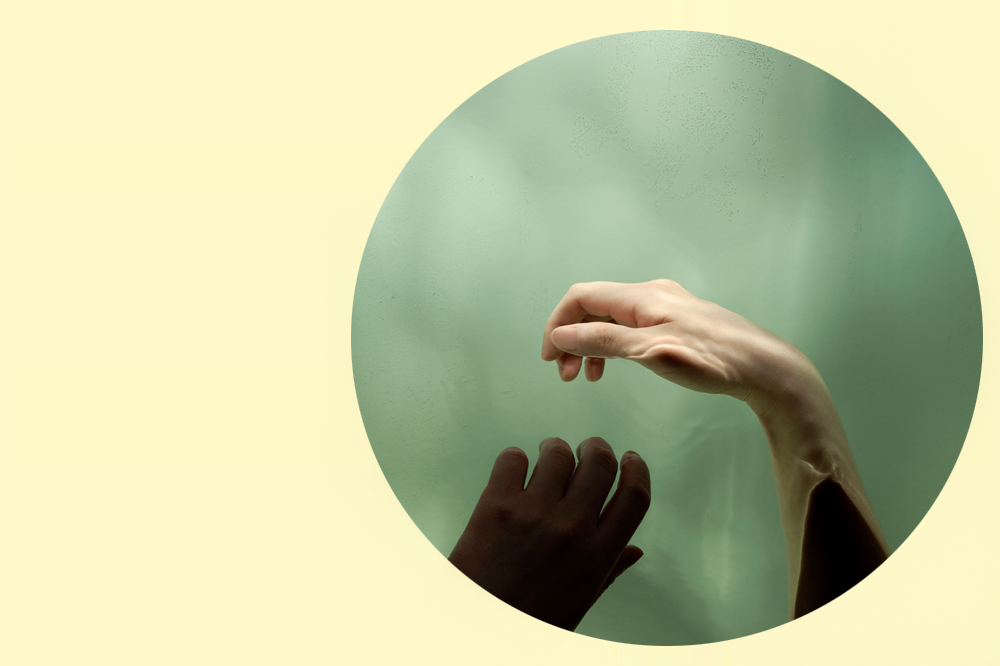
----------
2018
Spread page of my work titled "The composition of the state" (2012) in our exhibtion catalogue at Kunstquartier Bethanien, Berlin
https://shop.poison-berlin.com/product/bitch-material-katalog-signiert/

----------
2018
Great thanks to AndEditions for showcasing my work (among Jonas Mekas, Deimantas Narkevicius, Daniel Gustav Cramer and others) during Printed Matter's LA Art book Fair (2017), Offprint London at Tate Modern (2017), Printed Matter's NY Art book Fair at MoMAPS1 (2017) and Offprint Paris at Ecole Nationale Superieure des Beaux-Arts (2018).
You can get limited and signed eidtion of this work of mine here:


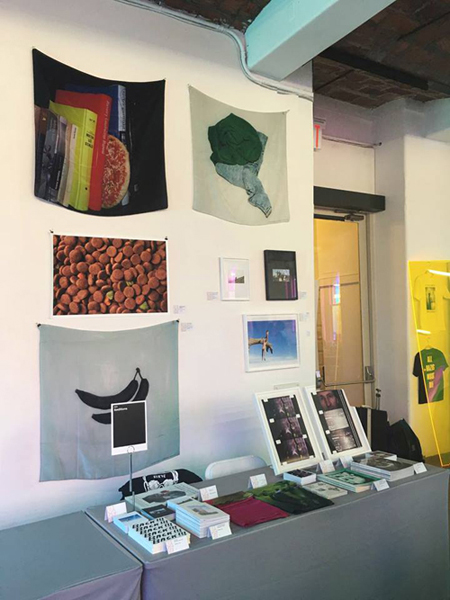
----------
2017
Work feature in Mein heimliches Auge 32: Das Jahrbuch der Erotik XXXII | 2017
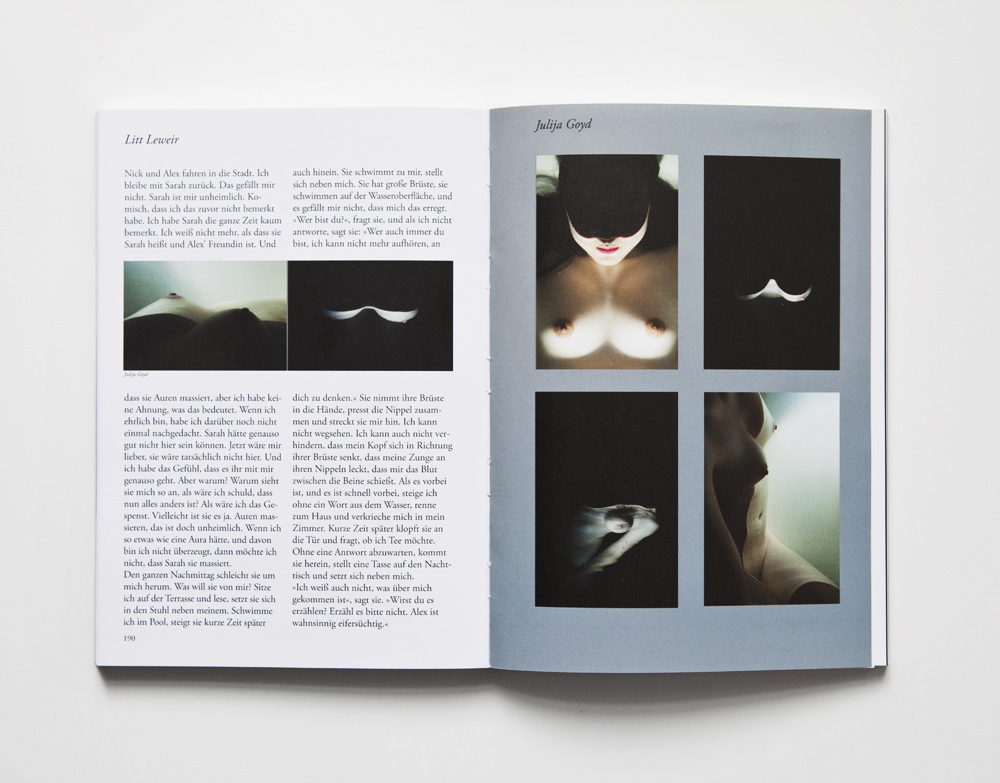
----------
2017
Our collaborative project with unique pearl jewerly brand "Planet Kasumi" is featured in the Lithuanian magazine "Lamų Slėnis"

----------
2016
Topknot magazine, in converstation with Laura Lindenmann & Tina Tenkman
TT: I was thinking about how we live in world where we see nudity on a daily basis and because we are the generation which talks a lot about sex and porn we consider "being prude" as an affront. But still – Looking at your pictures of the series "Naked Nylon" in a café by myself surrounded by a lot of people seeing me doing that felt weird and I was a little embarrassed. So is at all just hollow words? Maybe we are just playing it cool but certainly are still affected by nudity. But is it time we leave shame behind? Because it seems to not fit in this spirit of the age anymore.
TT&LL: Do you think it's time we need to overcome the sense of shame?
JG: It is an interesting question as I just recently have discovered that shame itself became a taboo in modern societies - since there is shame about shame, it remains under taboo. The taboo on shame is so strict, that we behave as if shame does not exist. While researching more about it I found out that german sociologist Norbert Elias found that the civilizing process in Europe was built on two contradictory movements: increasing use of shame as an internal control, on the one hand, and increasing repression of shame, on the other. Here I think its a good point for us to understand that the problem lies in a very complex system of a social control. We do not feel shame when we look at the commercial adds with topless/naked women/men as it is created for us to awaken our consumer desires, but we do feel ashamed while not being able to live the life which is proposed as the most desirable.
I think its important to reconsider modern definition of shame and understand it as an important social phenomenon. We are becoming less and less aware of this emotion which most of sociological theorists describe as a powerful force on values in social structures and fundamentals for our morals. It would be very important to find out what does shame stand for in today's society.
TT&LL: What part does the fabric (Nylon) play in the series "Naked Nylon"?
JG: Nylon seemed to be fitting conceptually and aesthetically - i wanted to create series about objectification of women and nylon served as a necessary metaphor. The description I used for the series was taken from the scholars' texts about sexual objectification of women in contemporary society, and while using this text I simply replaced a word "woman" to a word "nylon".
TT&LL: Why did you develop nudity as a main motive in your work?
JG: Since I was a child I liked going through my grandmother's extensive collection of art history books with masterpieces from the 15th to 19th century. I spent a lot of time studying the pages with nude paintings, sometimes I would catch myself being hypnotized looking at a single painting for hours. As well conditions, in which I grew up, were extremely conservative and nudity was a strong taboo. Then later after Lithuania became independent and western market crossed through inner borders of the country - most of young girls started adapting new "trends" and obviously nudity and body cult was one of them. I closely and curiously observed these changes and transformations and I was always very much interested about the effects of it.
TT&LL: Where does erotica end and pornography begin for you?
JG: Ideal behind erotica is to transcend its literally provocative subject - to add a third dimension, to extend. Basically both, eroticism and pornography, are serving almost the same purpose, but pornography proposes a temporary "fix" for our sexual needs - the goal is simple and straightforward: stimulation and immediate, intense arousal.
TT&LL: Should we get more open-minded towards everyday life-nudity or do you feel like we have crossed the line into objectification (especially women)?
JG: I think this liberation was and is useful in many ways. The fact that nudity is not a taboo anymore is not exactly a threatening situation, but what is interesting what has happened and still happening in the context of it. Objectification is not the only problem which arises from the liberation we are discussing here, but it is also the time we are living in. Lets simply take into account the amount of images we are capable to access so easily via internet, and in most of the cases images are retouched and carefully selected. How will it change our perceptions on what is the "body" and appreciation of it?
TT&LL: Do you feel like there are still double standards in the context of sexuality? Do you see us moving forward to gender equality?
JG: I think gender equality is still an important issue. But I have a feeling that it has got into another dimensions - I see so many families practicing different household and child care models, sharing responsibilities completely different than my parents did. Even in most scholars' discussion household and child care is already defined within the category of "work".
TT&LL: What kind of reactions do you receive by people looking at your photographs?
JG: Controversial ones. Some people like my work, some dont.
TT&LL: Many photographers focus on the face to transport emotions, you usually hide the faces of your models. How do you make it possible to transfer emotions to the viewer just through the body?
JG: Since I was very little I was attending a professional dance school. As a choreographer or a dancer it is essential to be able to express emotion through the body. What is important in dance is understanding how different states of mind are effecting our bodies, its silhouette and sometimes even shape. This knowledge was very useful while staging choreography for the images in order to get the result I wanted.
TT&LL: The human body - Piece of Wonder or limited instrument?
JG: Both - its interconnected. Thats the beauty of it. The limits of the human body make us wonder about the infinite.

----------
2016
Art Verge, in converstaion with Yannis Kostarias
https://art-verge.com/2016/11/01/stripped-realities-julija-goyd-captures-a-world-of-beauty/
Stripped Realities: Julija Goyd captures a world of beauty.
Either with colorful or abstract monochromatic images, Goyd’s projects illustrate her concerns related to performance, space or movement of the human body as well as the perceptual experience. Goyd also aims to explore sexuality and the various forms of eroticism in the human nature through her camera lenses. With faces covered and human silhouettes stripped bare, Goyd goes beyond the usual functionality of the human body re-introducing it as a new form of art.
YK: Can you tell us about the process of making your work? What inspires you?
JG: The source of inspiration can vary from project to project, but in most cases it is a book, which I read, sometimes a person, whom I met, or a discussed subject. Very often ideas are already there, they just need to get stimulated, and very often that stumulus is present in a daily life, in moments, glimpses, people and etc.
YK: How would you define your work in few words?
JG: I am interested in the processes of transformations - my subjects are eroticism and nature.
YK: Do you have a favourite book, film or painting which inspires you?
JG: The book, which shaped many of my ideas and interests, is “Eroticism - Death and Sensuality” by Georges Battaile. And the movie, which I saw lately and which left an enormous impression on me, is “Of Horses and Men” by Icelandic director Benedikt Erlingsson.
YK: Do you have any favorite artists?
JG: Since already a long time I have been fascinated by work of Laurie Anderson and James Turrell. There are many artists-photographers, the work of whom I keep following - it’s Jeff Wall, Stephen Shore and many others. I feel greatly inspired by Japanese masters of photography - each time when I come across one or another photograph, I feel deeply touched by the ability of artists to focus on details, which can, in some cases, lead to transcendent experiences.
YK: What are your plans for your near future?
JG: I would like to produce more video works.
YK: An interesting video work you were involved in is Decadentia, what was about?
JG: I was invited by a curator (today the cultural attaché of Lithuania in London) Juste Kostikovaite to make a video about my work for internet platform The Deep Splash. I decided to create a video, which stands for itself as an artwork, while telling a rather personal story about the development of my work. The video was commissioned and supported my Ministry of Culture of Lithuania.
This video speaks about my interest in images of the body in art from an early age. My works try to balance between neutral decay of bodies and the meaning of "Decadentia" as a possible phase of social degeneration, where bodies are not just decaying, but they are being exploited for the sake of the infinite yet paradoxically - very finite pleasures.
----------
2016

Exhibition "GIve me solace" at Schaufenster, Berlin
SV: What gives you solace?
JG: The feeling of familiarity.
SV: How did you come up with the idea of the Emates?
JG: Since long ago I wanted to create a body of work using digital manipulation tool. So I did it, I used original images from pornography sites and made them appear erotic. The titled came up alongside with an idea for the series, turning „Pmates“ (pornography mates) into „Emates“ (erotic mates).
SV: Do you believe that porn might be really comforting ?
JG: In authentic represantation porn does not comfort me. But I do believe, that porn can have certain value to some people. Pornophilia has been noted within one of forms of love, some kind of deviation, obsession or even addcition. These type of acitvities certainly are followed with some postive or satisfactory effects.
SV: You did very different things in your life, why are you working as an artist now?
JG: The answer is simple - things, which i do now, are what I always wanted to do. I feel pure satisfaction from my work.
SV: What do you miss when you are working?
JG: Usually when I work, it absorbs me so much, that I miss maintaining a healthy dalily routine balance, like eating or even sleeping..
----------
2015
Work feature - a portrait of Saralisa Volm in the book "Faces" curated by Peter Weiermair and published in 2015 by Stockmal and Martel. The book features works by some of contemporary art's best-known names like Robert Mapplethorpe, Juergen Teller, Anton Corbijn, Antoine D'Agata, Pieter Hugo and others.
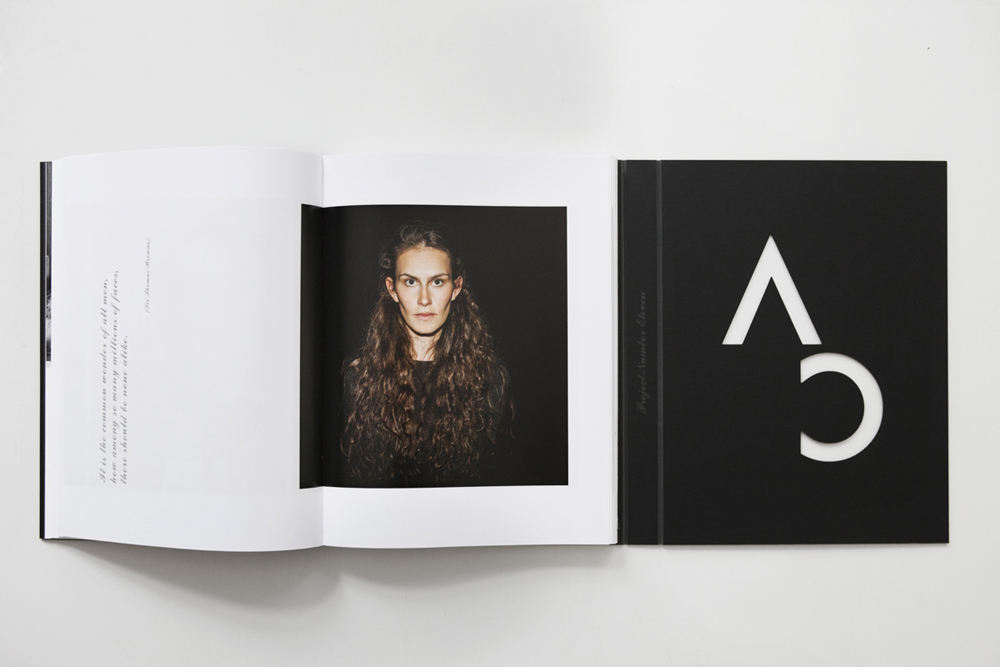



----------
2015
From Wind is a creative collaboration between Julija Goyd, clothing label Anchovy and N WIND magazine. Direction and speed of wind in Northern capitals are turned into artworks on large format silk scarfs.
For more:




----------
2015
In converstation with Simon WIlliams for the exhibition "Uni-Form" at The Ballery, Berlin | 2015
SW: Where were you born and where did you grow up?
JG: I was born and grew up in Vilnius (Lithuania).
SW: Does living in Berlin have an impact on your work?
JG: Yes – living in Berlin was and still is a great inspiration for me. When I came to Berlin I was not sure about how I will continue my career since my education and profession was involved in economics and finances. The city, mostly people living in it, helped to shape my visions and provided a space for creative practise and interests in arts.
SW: How did you get involved with arts?
JG: Since I was very little I was attending professional dancing school and only what I could dream of was a dance. But when I grew older my dance teacher told me that my physics are not suitable to become a dancer – I was simply growing too tall for the standards they expected. So, I had to decide very quickly what my profession is going to be and my parents convinced me to study economics. Since I was a very good student in economics, very early during my studies I was offered a good working position in finances – I had to take over financial management of one big company. The start of my career was a very exciting experience as I was dealing with important and interesting topics in business management, I still remember those days as if I was in some kind of movie – it was a period of a sudden economic growth in Lithuania, the country was flourishing and my work gave me lots of intense and positive drive. It took me 4 years of work in finances to realize that I actually desired something completely different. I was very lucky that in the same time by chance I was offered to play main female roles in two Lithuanian feature films. Only during that transition period I realised that I am getting very much interested in film, camera and images. So I bought a camera and made my way until now.
SW: Are their any artists that made a big impression on you?
JG: There are many - I am easily touched and inspired by any good work of art.
SW: Where are you at now creatively and what are you working on?
JG: Its always difficult to find a definition of a place in the process of creativity. I often and almost constantly find myself in the moments of transitions from one project or method to another. I guess as everybody else I am in the constant struggle of trying to find new means and perspectives for my work.
SW: You have mentioned to me several times the subject of science. Tell me more about how you connect to this word.
JG: I think you are talking about the research institute “Rework”, which for me was the first professional encounter with a science. I made a documentary about them, also worked as a researcher on one project. This shaped my intense interest in science and I have no doubts that my personal work will find a meeting point with what I already learned through research practises.
----------
2015
Ore.lt, pokalbis su Reda Riepšaite | 2015
„Sketch Up“ 09: Julija Goyd
Tai – sėkmingas lietuviško meno eksporto pavyzdys: Berlyne gyvenanti ir dirbanti kūrėja Julija Goyd asmenines parodas šiandien rengia tokiuose pasaulio didmiesčiuose kaip Berlynas ir Niujorkas. Režisuotos, studijinės fotografijos kadrai kalba patys už save – menininkės darbuose ryškus erotinis prieskonis, realizmas, grožio sąvokos nagrinėjimas. Kiekviena Julijos nuotrauka – išjausta ir sustyguota. Gal dėl skaičiukų, po ilgamečių ekonomikos studijų, tebesisukančių Julijos galvoje?
Jautrios fotografijos ir video meno darbais sužavėjusi tarptautines meno erdves, Julija Goyd mielai sutinka duoti interviu Ore.lt, pakalbėti apie menininko duoną bei meno sąvokos skirtumus Vilniuje ir Berlyne.
RR: Bendraujame elektroniniu paštu, nes, minėjai, keliauji. Kokius kraštus dabar lankai?
JG: Šiuo metu keliauju su vienu projektu per kai kurias Europos Šalis ir skirtingus Vokietijos miestus – menininkui Carsten Nicolai padedu surinkti reikiamą foto medžiagą jo publikuojamam darbų albumui.
RR: Viešojoje erdvėje dažnai kalbi apie keliones, publikuoji senų kelionių nuotraukas. Kelionės – taip pat viena iš tavo savirealizacijos, gal net meno formų?
JG: Man retai tenka malonumas keliauti vien atostogų tikslais, labai dažnai keliauju su arba darbo projektu, arba meniniu kūrybiniu projektu. Užtruko nemažai laiko, kol sugebėjau suderinti kelionių teikiamą malonumą su atliekamais darbais, tik ne per seniausiai supratau, kad tai yra vienas įdomiausių ir geriausių keliavimo būdų, nes labai dažnai tenka susidurti su vidine kiekvienos lankytinos šalies santykių ir bendradarbiavimo kultūra ir struktūra, o tai įkvepia ir stimuliuoja mane kūrybiškai.
RR: Kas, tavo akimis, menas yra vilniečiui ir kas berlyniečiui? Ar skiriasi mūsų ir vokiečių požiūris į šiuolaikinį meną?
JG: Asmeniškai aš nejaučiu požiūrių skirtumo. Manau, skirtumas yra tik tame, kad Vokietijoje būti menininku yra šiek tiek paprasčiau, nes egzistuoja daug daugiau galimybių skirtingoms pasirinktoms saviraiškos kryptims. Stiprios meno mokyklos, pasauliniu mąstu dirbančios meno galerijos, inovacijų ir mokslinės pakraipos mąstysenos puoselėjimas sudaro palankesnes ir įdomesnes sąlygas meno praktikai. Vokietijoje būti geru menininku yra labai gerbtina profesija, Lietuvoje tai atrodo kaip sunkiau pasiekiamas tikslas… Nors, kita vertus, man tenka neretai susidurti arba skaityti apie Lietuvos jaunimą ir, neslėpsiu, mane visada žavi ir stimuliuoja mūsų jaunųjų žmonių pasiekimai.
RR: Kurie lietuvių menininkai – didžiausi tavo įkvėpėjai?
JG: Šiuo atveju galėčiau paminėti Joną Meką. Vienas jo labai stiprus darbas pavadinimu “A walk” (1990) iki šiol yra mano įkvėpimo šaltinis. Mekas sugeba įspūdingai paversti kasdienius įvykius meniniais kūriniais.
RR: Jau radai savo mėgstamiausią Berlyno kampelį? Kur jis?
JG: Berlynas yra nuostabiai žalias miestas. Tik 15 minučių metro ir patenki į visiškai kitą aplinką, apsuptą miškų ir ežerų. Viena tokių nuostabių vietų yra Grunewald.
.
RR: Kaip atrodė tavo pačios startas Berlyne?
JG: Mano startas buvo kaip ir daugelio kitų. Atvykau į Berlyną be jokių konkrečių tikslų. Pradžioje buvo labai sunku, pirmuosius kelis metus teko dirbti bet kokį siūlomą darbą, net prireikė išmokti skirtingų amatų. Bet, lėtai startuojant, maždaug po kokių trijų metų jaučiau, kad esu visiškai įsikūrusi šiame mieste ir galėjau jau daugiau laiko skirti savo kūrybinei veiklai.
RR: Dabar tavo meno kūriniai eksponuojami Berlyno, Niujorko galerijose. Kas kelyje iki šio taško buvo didžiausias iššūkis?
JG: Man asmeniškai užtruko nemažai laiko, kol supratau, kad būti menininku yra rimta profesija, kad tai – ne bohemiškas gyvenimo stilius. Todėl prireikė gan sunkiai mokytis disciplinuoti save, sukurti ir griežtai laikytis numatytų tikslų. Vienas sunkiausių momentų yra suvokimas, kad esi vienas šiame kelyje (savo paties darbdavys ir darbuotojas). Būna ypatingai sunkių momentų, vadinamų kūrybinėmis krizėmis, kai niekas kitas, tik pats, turi išmokti tai atlaikyti, pereiti ir priimti kaip neatsiejamą proceso dalį.
RR: Kokia muzika skamba tavo fotosesijų metu? Kiek tavo darbe svarbi garsinė aplinka? Nes fotografijoje tai visgi lieka už kadro…
JG: Muzikos beveik niekad nepaleidžiu. Man svarbus intymus kontaktas su žmogumi, kurį fotografuoju. Todėl labai dažnai leidžiame laiką bendraudami. Gan neretai yra svarbi tyla – ji būtina mano darbams, tam tikros vizualinės įtampos sukūrimui.
RR: Tavo nuotraukos labai ryškios, jausmingos, dažnai iššaukiančios. Kas tave įkvepia tokiai ekstravagancijai?
JG: Labai dažnai įkvėpimo semiuosi iš skaitomos literatūros arba asmeninės patirties, o tai, kas atvaizduota nuotraukose, yra mano gyvenimo ir aplinkos dalis.
RR: O kokią knygą skaitai dabar?
JG: Šiuo metu paraleliai skaitau kelias knygas: Wolfgang Metzger “Laws of Seeing”, Camille Paglia “Sexual Personae” ir Rudolf Steiner “The Philosophy of Freedom”.
RR: Su kokiais projektais dirbi pastaruoju metu?
JG: Dabar dirbu ties nauju projektu, kuris man atvėrė duris į šiek tiek naujas sritis. Esu surinkusi nemažą nuotraukų kolekciją iš pornografijos tinklapių – mane jau seniai domino moterų reprezentacija šioje industrijoje. Galutiniame rezultate planuoju pateikti nuotraukų seriją, kurioje vizualiai matomi išliks tik tų moterų speneliai, o visa kita, kas buvo aplink, pereis į estetiškai gražų vientisą paviršių.
RR: Ką nori tuo pasakyti?
JG: Viena mano darbo temų yra erotizmas. Bežiūrint į apsinuoginusių moterų nuotraukas pornografijos industrijoje, man visad norėjosi surasti bent vieną erotišką elementą – šiuo atveju speneliai man pasirodė kaip vienas jų.
RR:Kur ir kada galėsime išvysti tavo fotografijų Lietuvoje?
JG: Šiuo metu dar neturiu planų, bet tikiuosi, kad tai įvyks greitai!
----------
2013
Work feature in the book The Naked & The Nude curated by Peter Weiermair and published in 2013 by Stockmal and Martel. The book is an anthology of international nude photography, which features works by some of contemporary art's best-known names like Wolfgang Tillmanns, Nobuyoshi Araki, Ralph Gibson, Vanessa Beecroft and Jeff Bark.
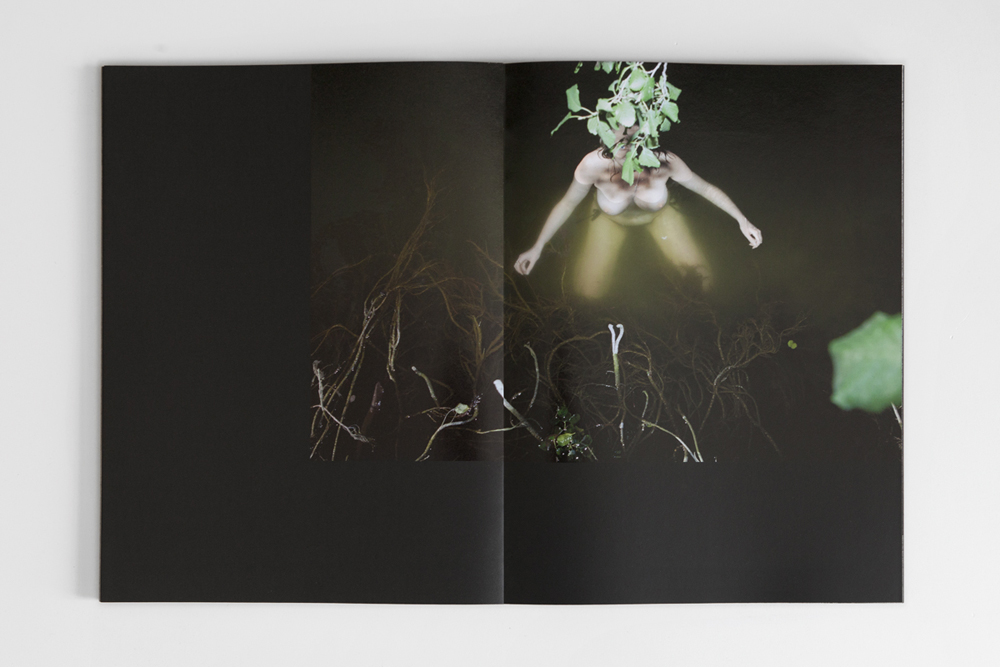

----------
2012
A is Yellow is an ongoing collaboration between Anchovy and Julija Goyd. Born out of a simple curiosity of what language might look like, the collection of silk scarves suggests a literal way to speak through your appearance. Design of each of the pieces is defined by an algorithm that distorts letterforms, creating an abstract flow of color. The language thus becomes a tactile artifact bound by physical ties with the human body.
